England - Sep18 - Imperial War Museum Duxford
|
| Next on the agenda was the Battle of Britain hangar. We walked in the door and there was this great full-scale diorama of a shot down Messerschmidt 109E. |
| |
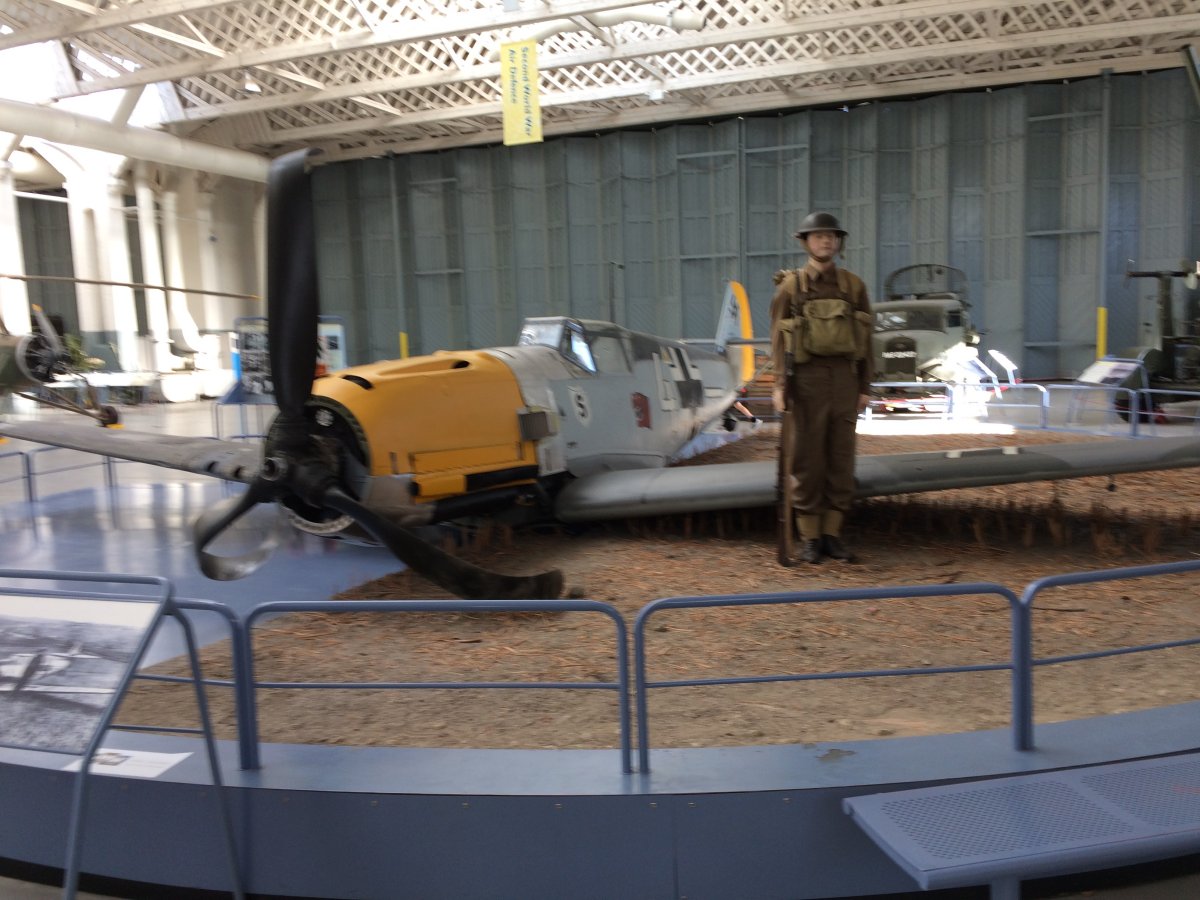 |
|
|
The diorama depicted the scene captured in this photograph. The 109's engine failed in combat and the pilot had to make a forced landing.
|
| |
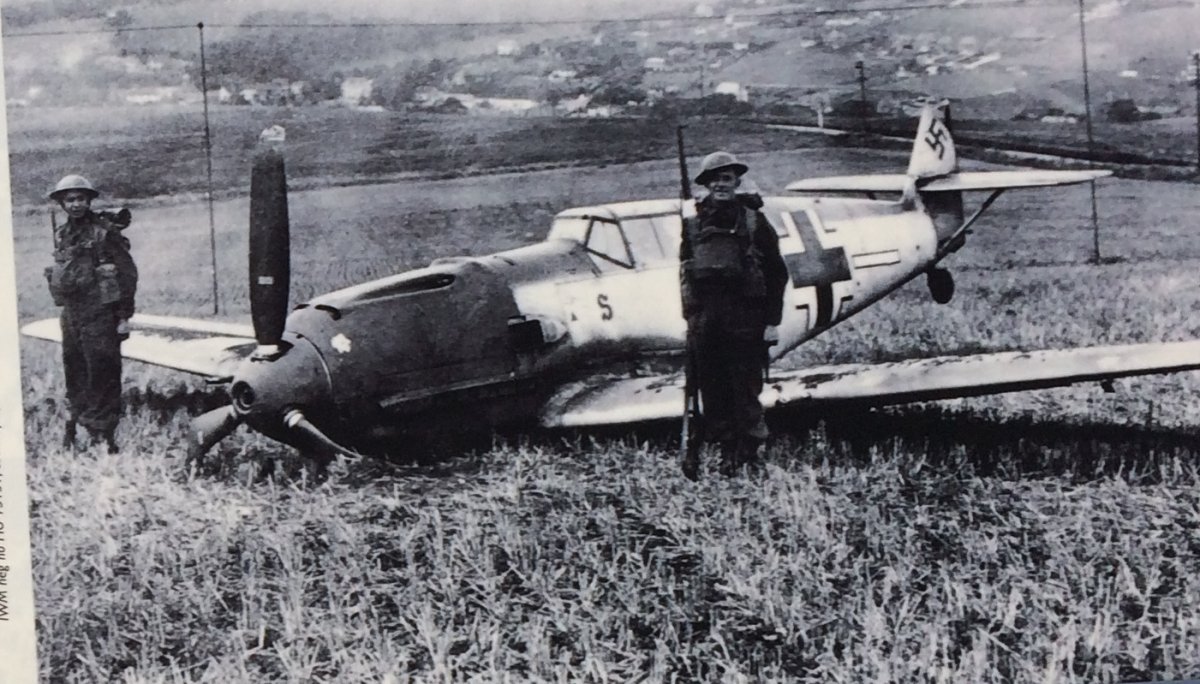 |
|
| Amazingly, the airplane is the very same plane in the picture. It was sent on a fund-raising tour of the United States and Canada throughout the war. It was rescued from a scrap heap in the 1960s. |
| |
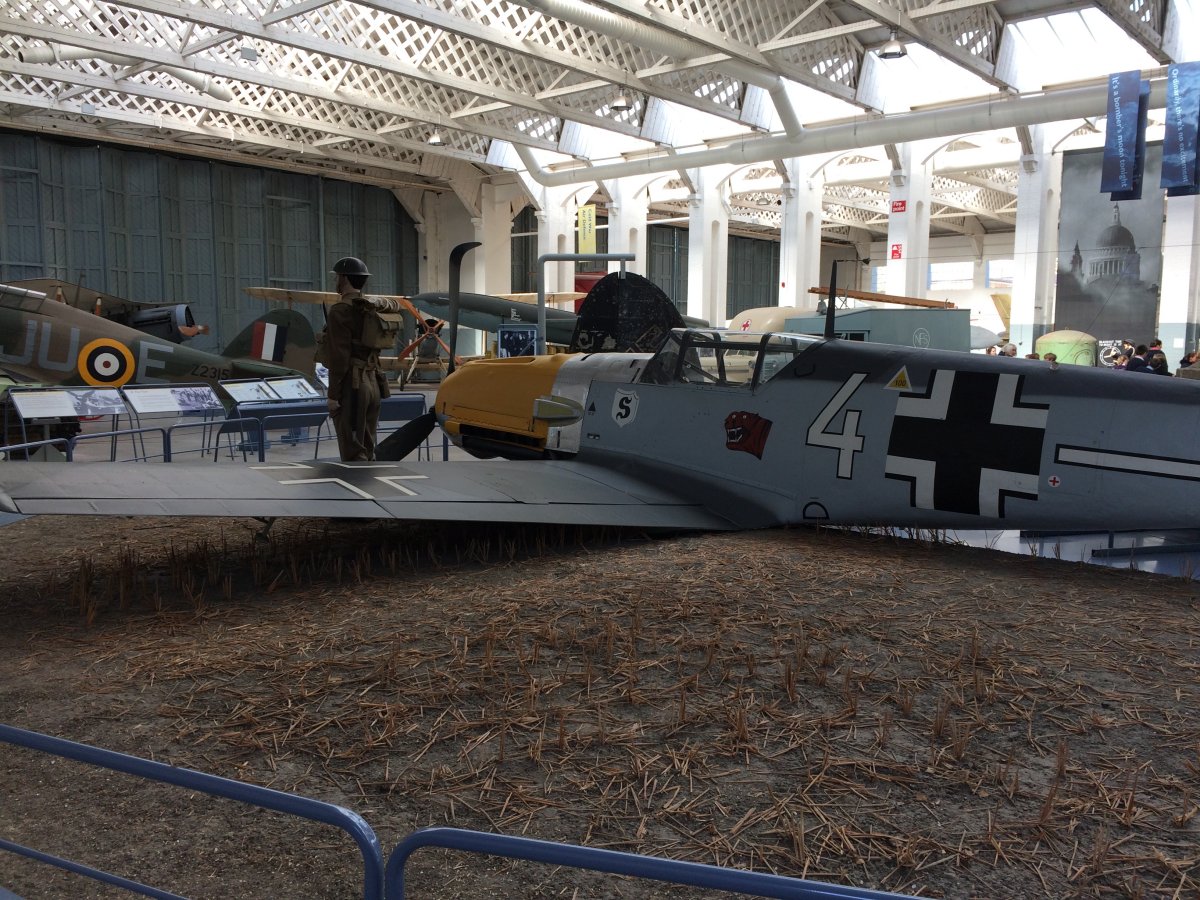 |
|
|
The vertical tail and engine of a Heinkel 111 bomber.
|
| |
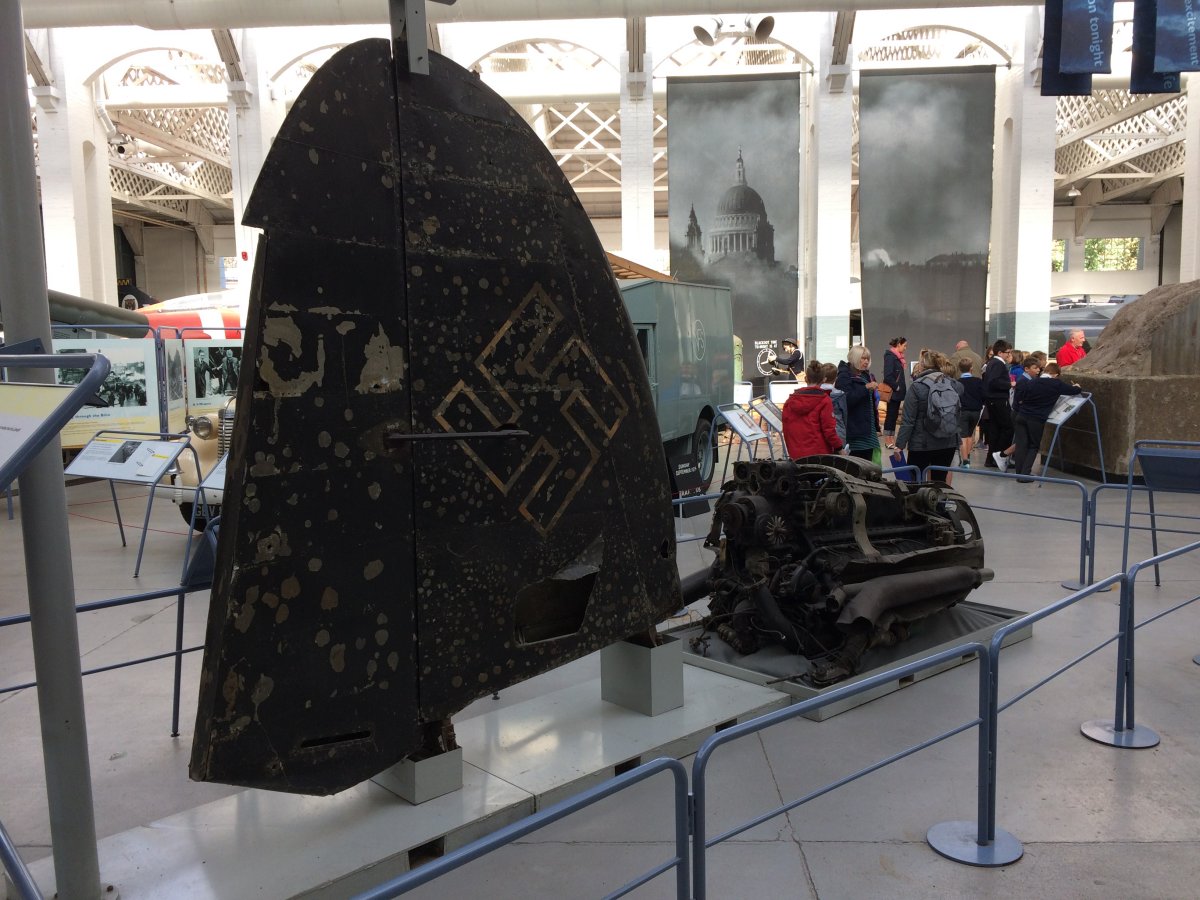 |
|
| A beautifully restored Hawker Hurricane, which was actually the main British fighter in the Battle of Britain. There were 32 Hurricane squadrons and only 19 Spitfire squadrons. Of course, the Spitfire was the better fighter and would fend off the Messerschmidts while the Hurricanes went after the bombers. |
| |
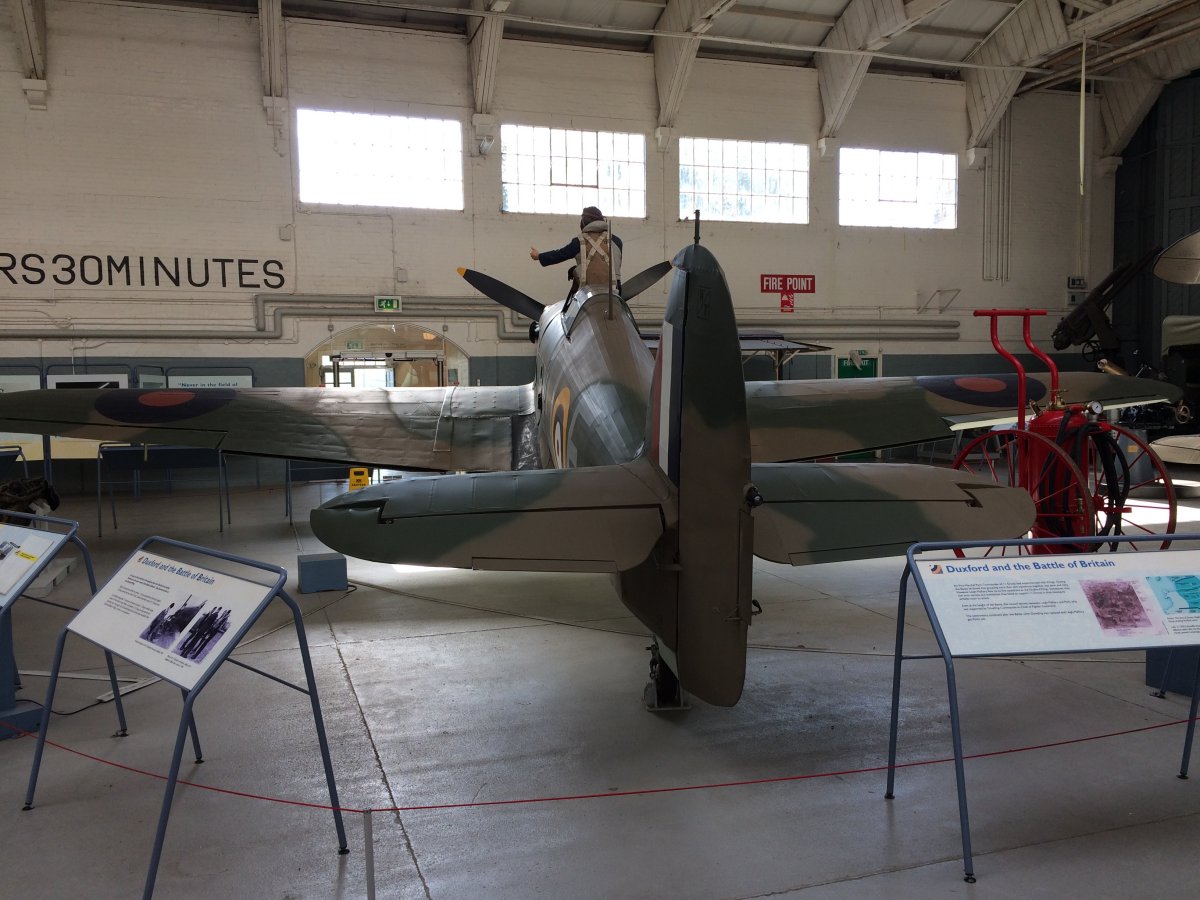 |
|
| A Bristol F2B. This British World War One fighter was unusual in that it carried two men -- a pilot and a observer/gunner facing backwards. It flew on the western front and was also used for home defense. |
| |
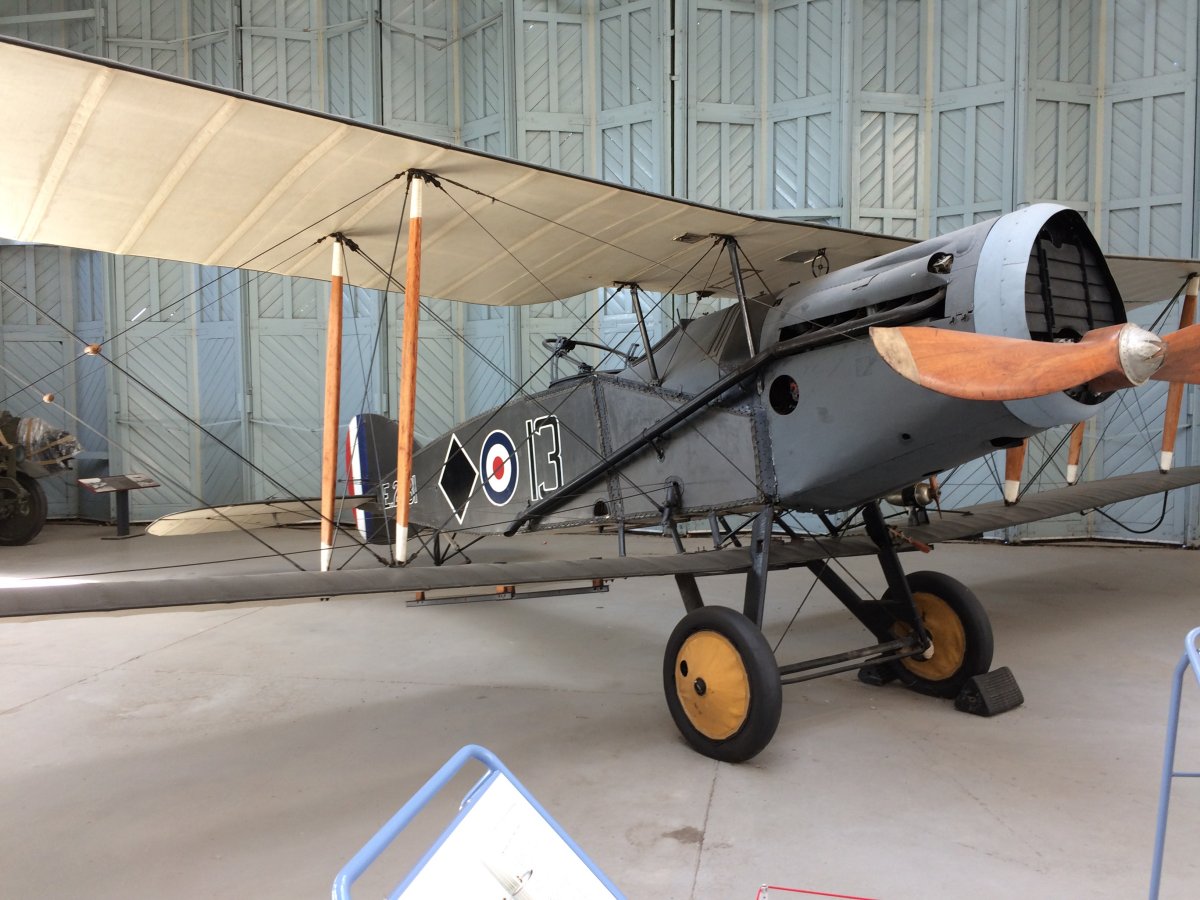 |
|
| A Royal Aircraft Factory BE2c. A British World War One two-seat reconaissance aircraft and light bomber. It was also used as a night fighter to shoot down German Zeppelins. |
| |
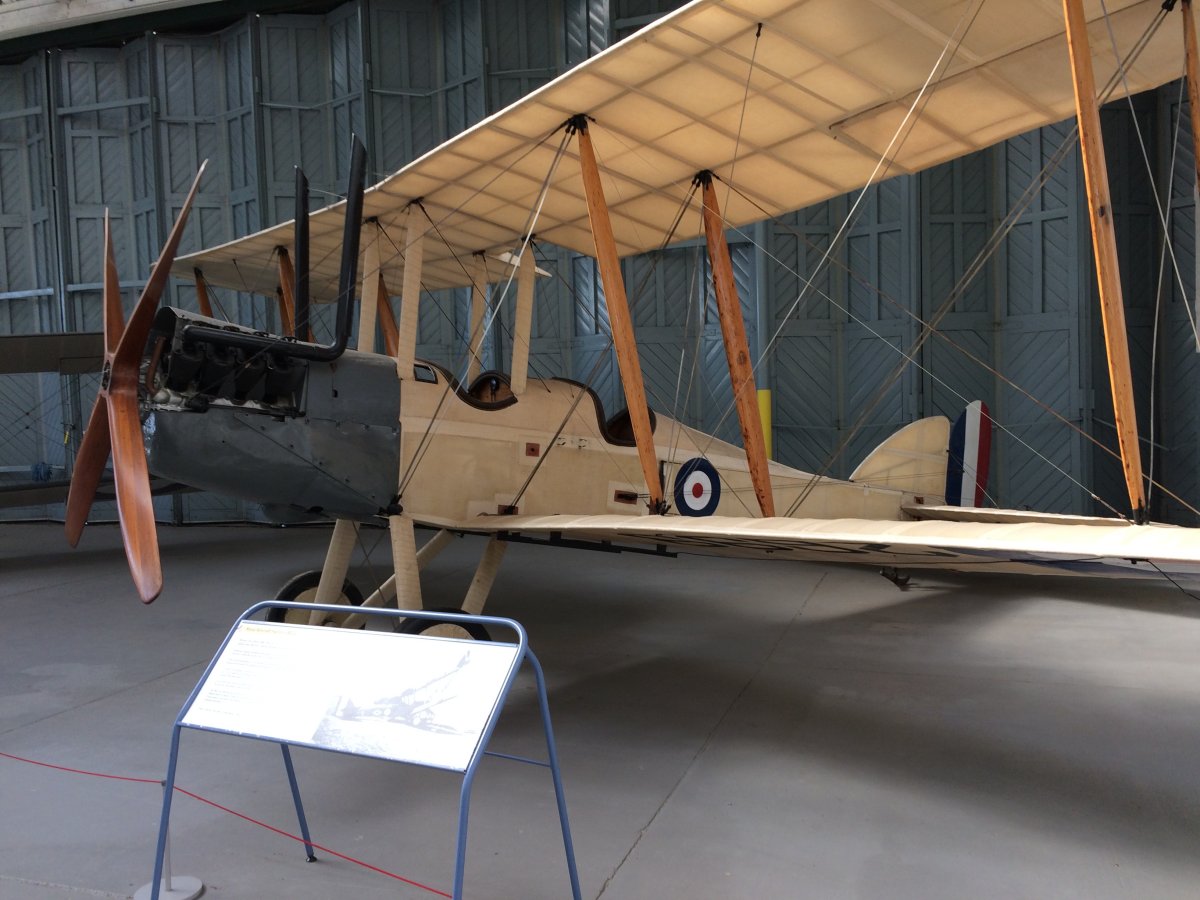 |
|
|
Gloster Meteor F8. The Meteor was the Royal Air Force's main home defense fighter from 1950 to 1955. The earliest version of the Meteor was the only allied jet aircraft to fly operationally in World War Two, used in July 1944 against the German V1 buzz bombs.
|
| |
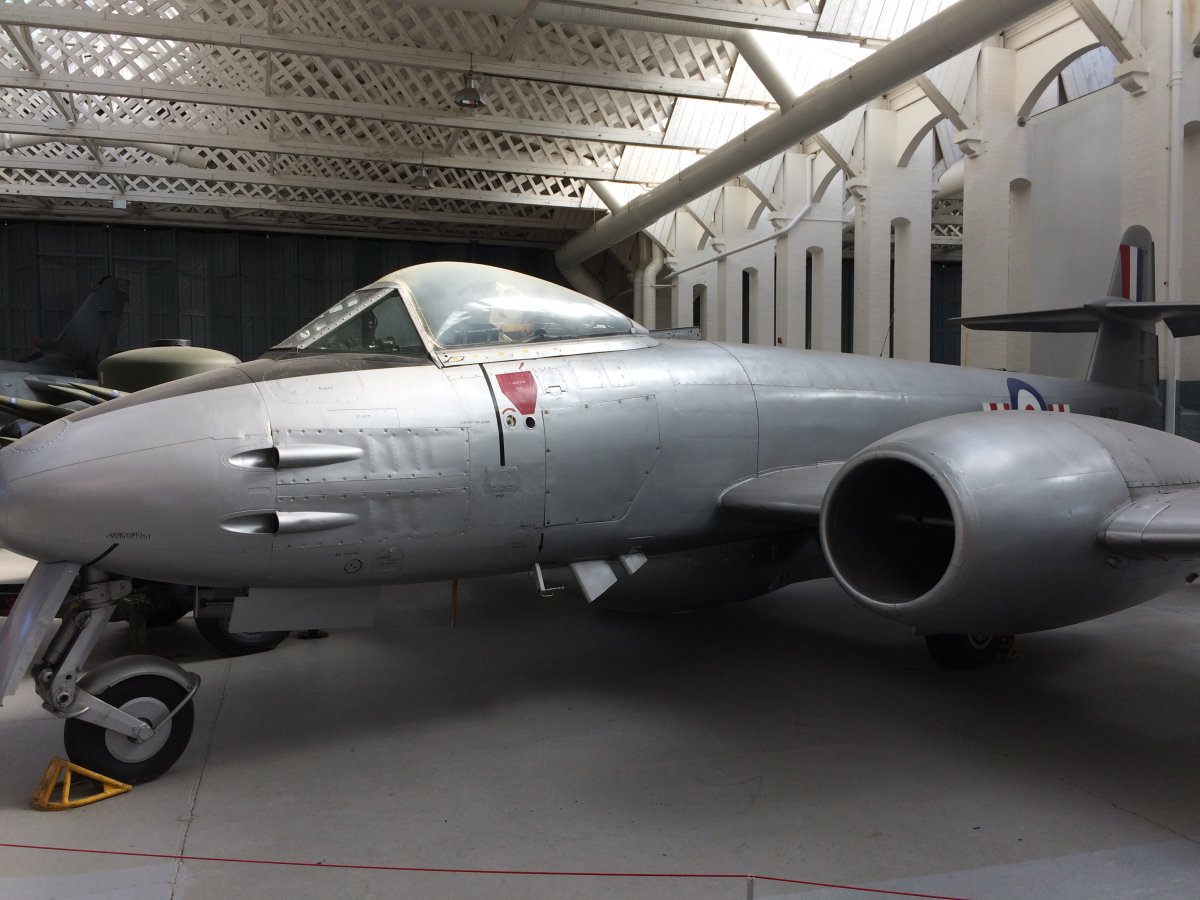 |
|
| The British have a knack for coming up with very unusual looking aircraft. This is a de Havilland Vampire jet trainer, used in the 1950s. |
| |
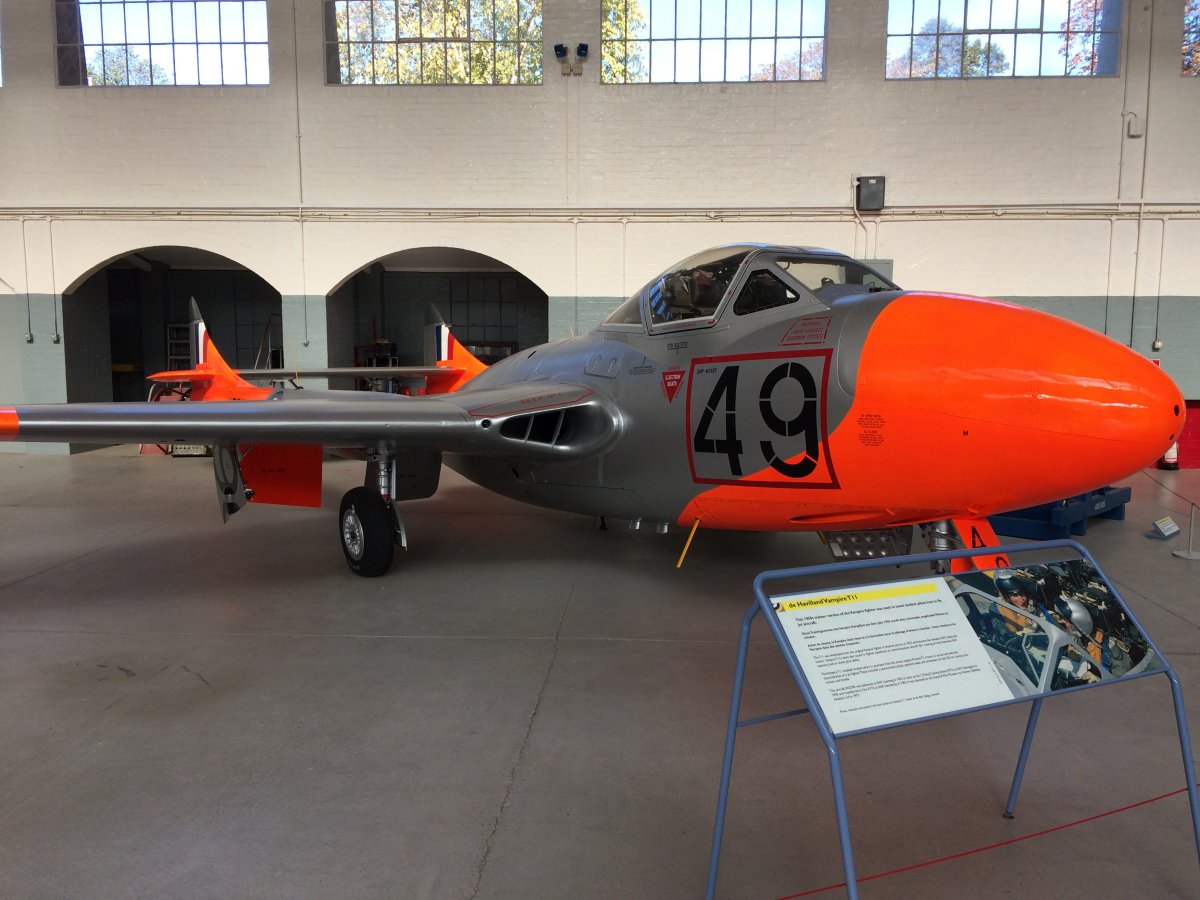 |
|
|
The Tornado GR$ swing-wing fighter-bomber, Britain's workhorse combat jet used since 1982. It is being taken out of service in 2019, being replaced by Eurofighter Typhoons and F-35B Lightning IIs.
|
| |
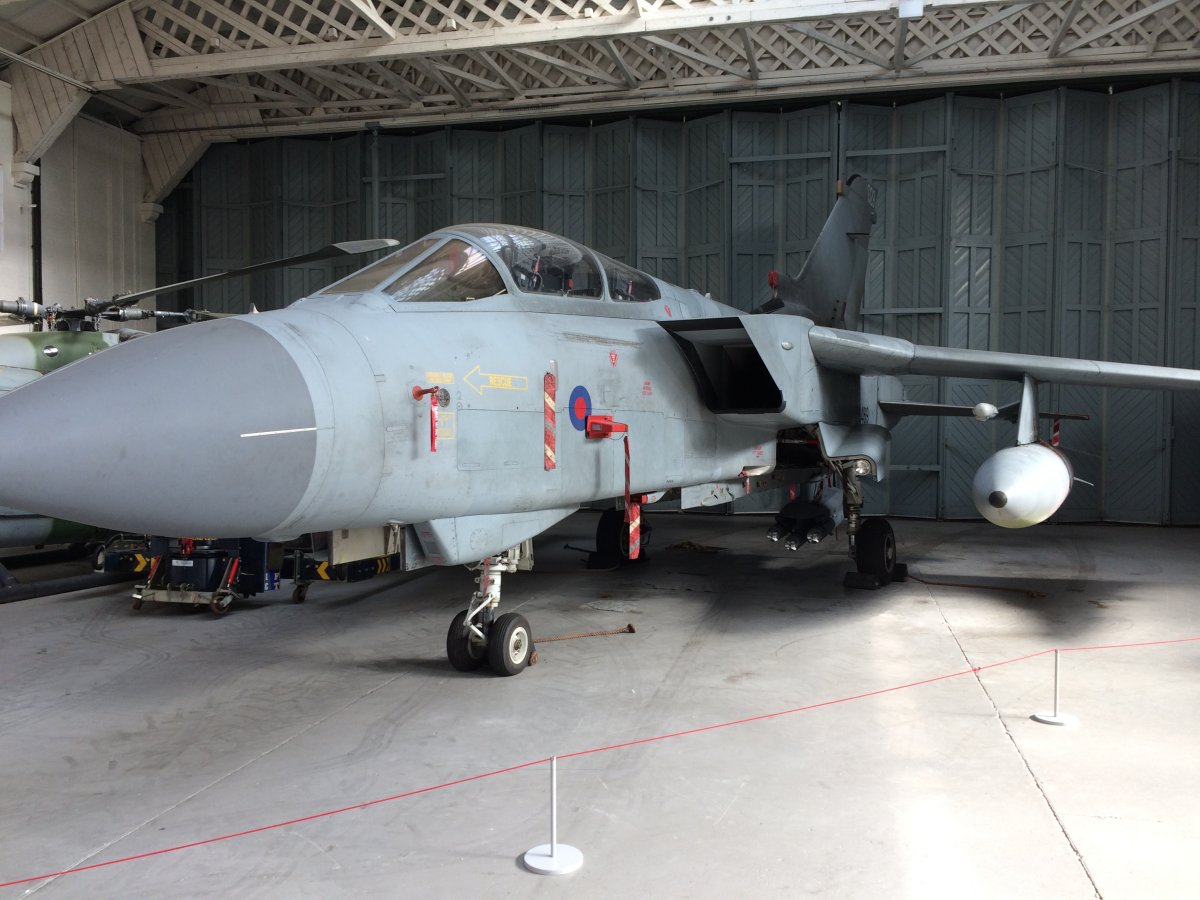 |
|
| Speaking of the Eurofighter Typhoon, here is one! Nice looking jet. It entered service in the Royal Air Force in 2006. |
| |
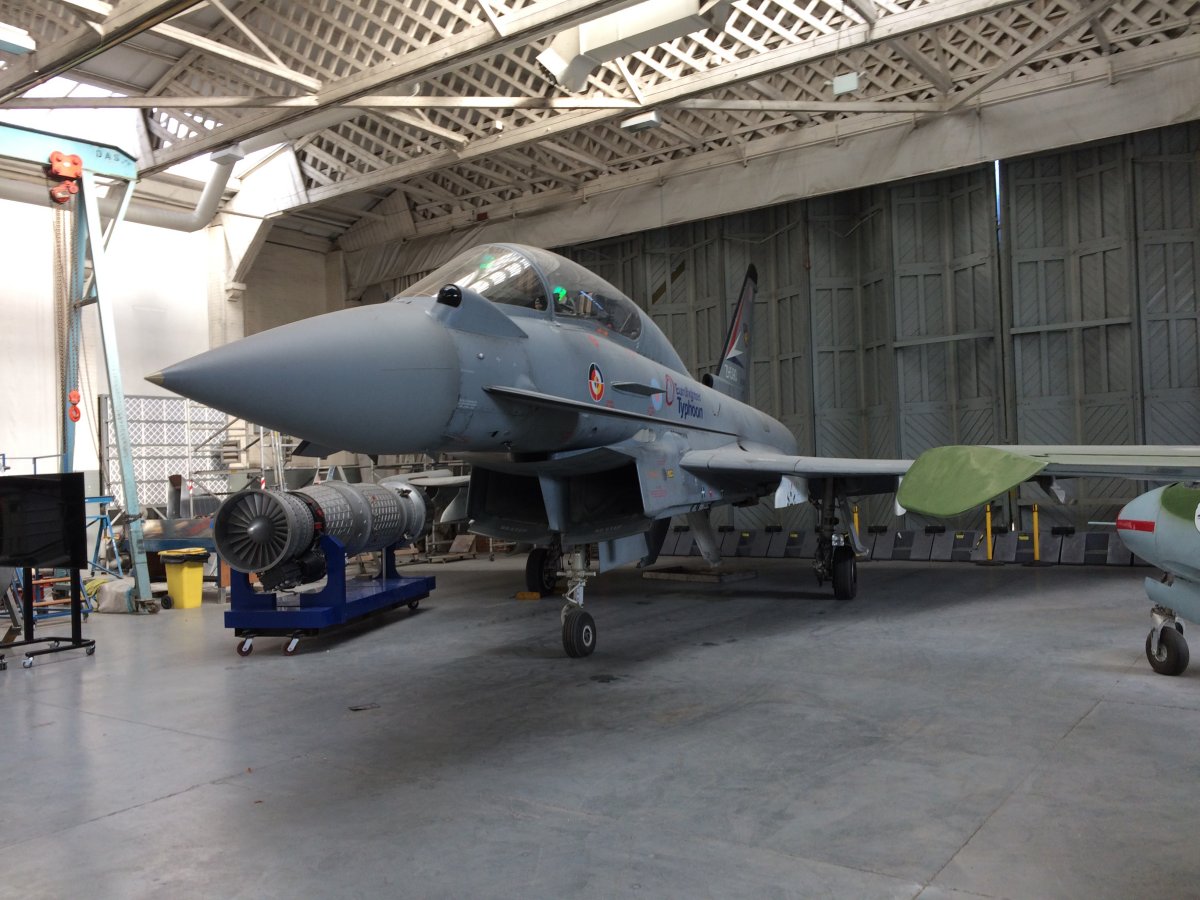 |
|
| A Heinkel He-162 Salamander. |
| |
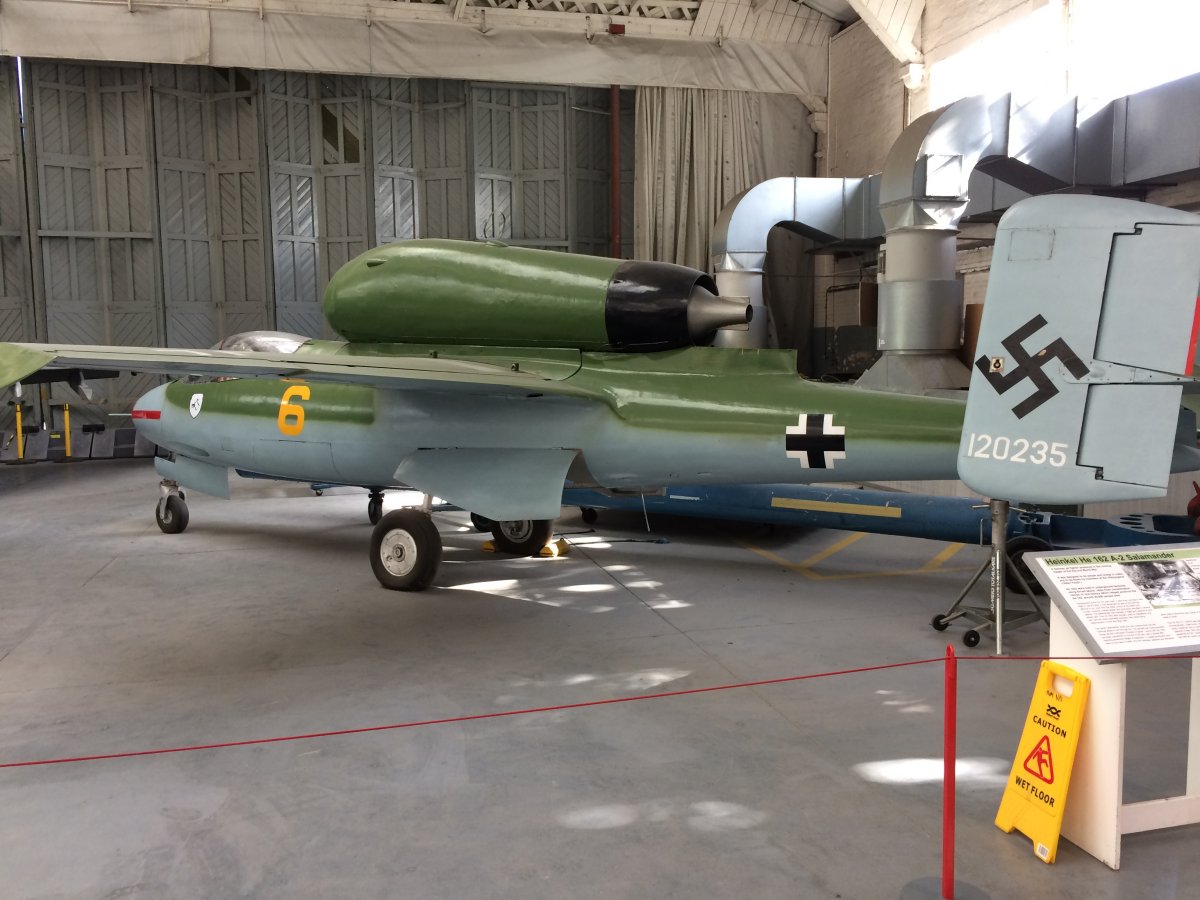 |
|
| Next up was the Restoration hangar. I was fascinated with this Handley Page Victor long range jet bomber. Victors carried Britain's strategic nuclear weapons from 1958 to 1969. Some were used as air-refueling tankers until 1993. |
| |
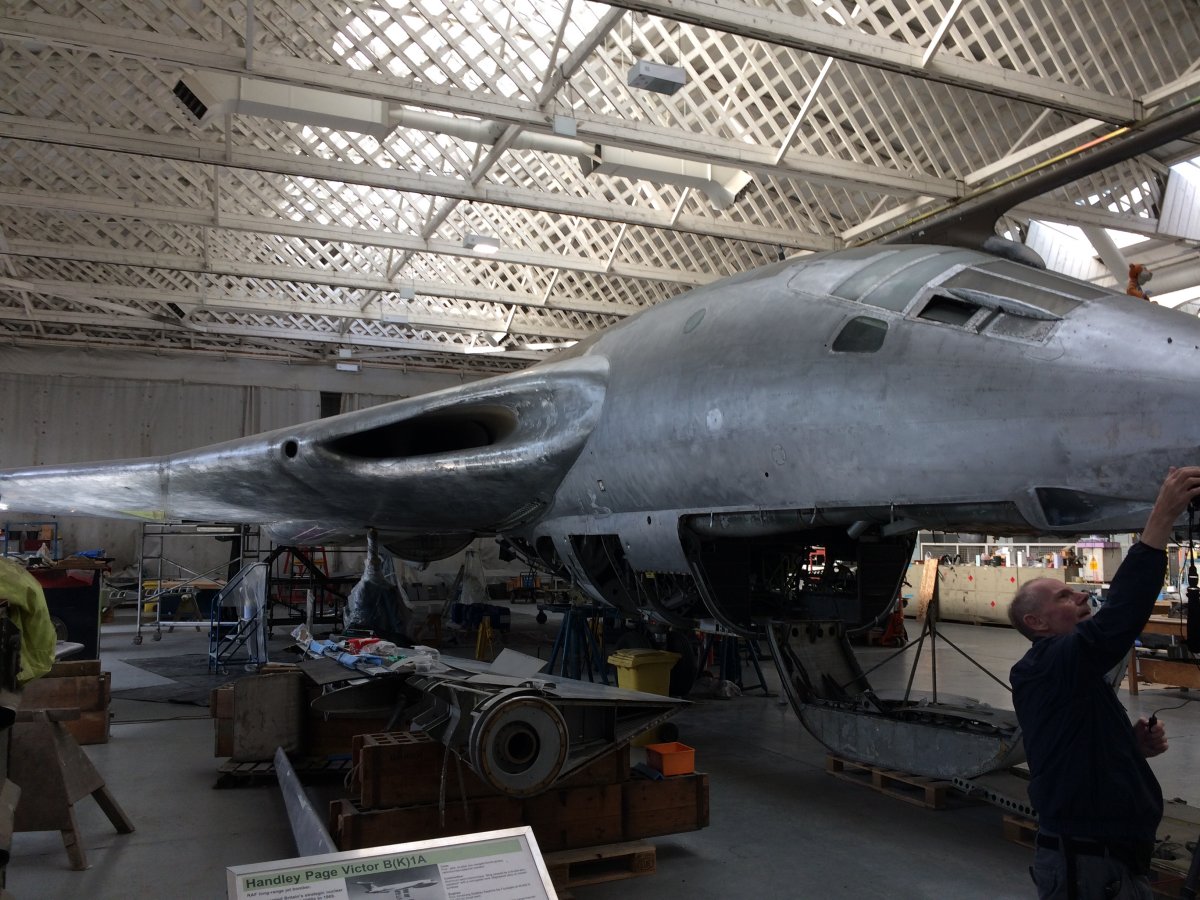 |
|
|
This is what an airworthy Victor looks like.
|
| |
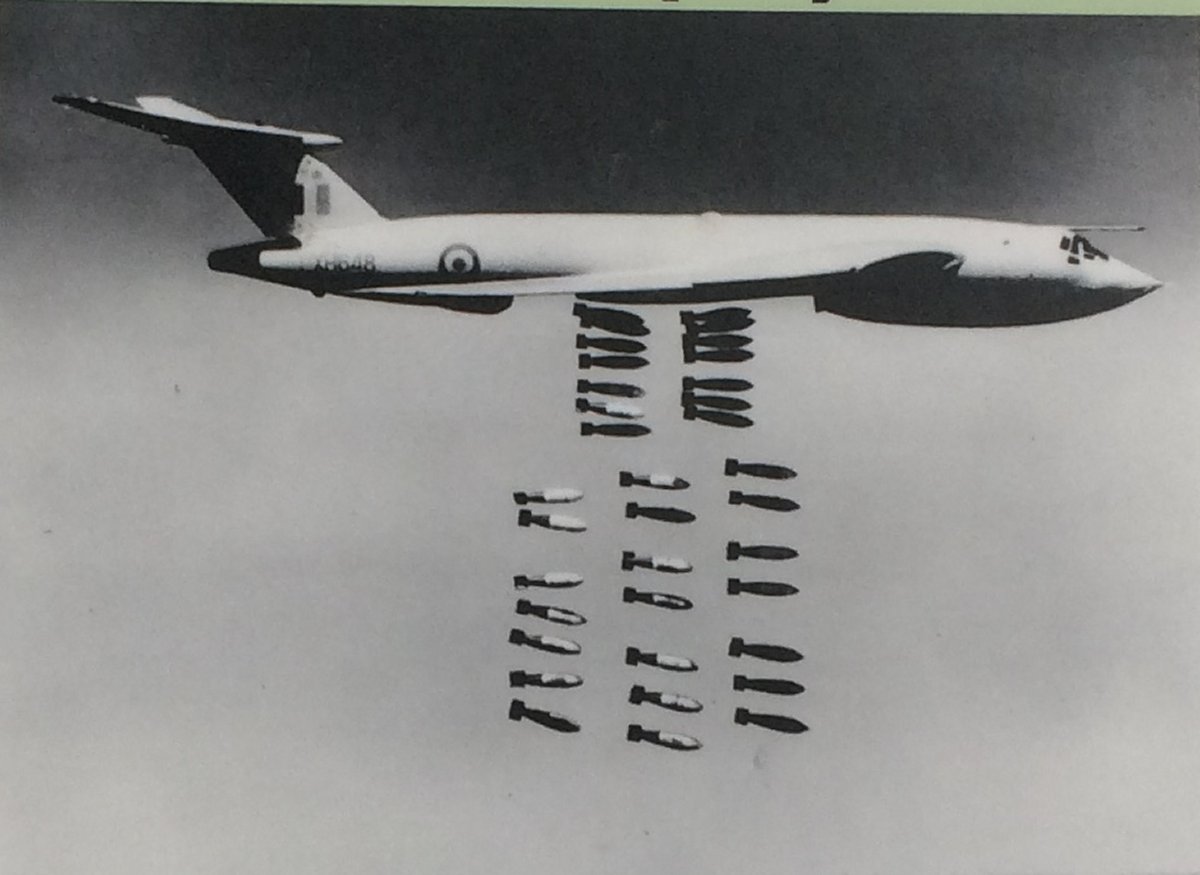 |
|
| From another angle. |
| |
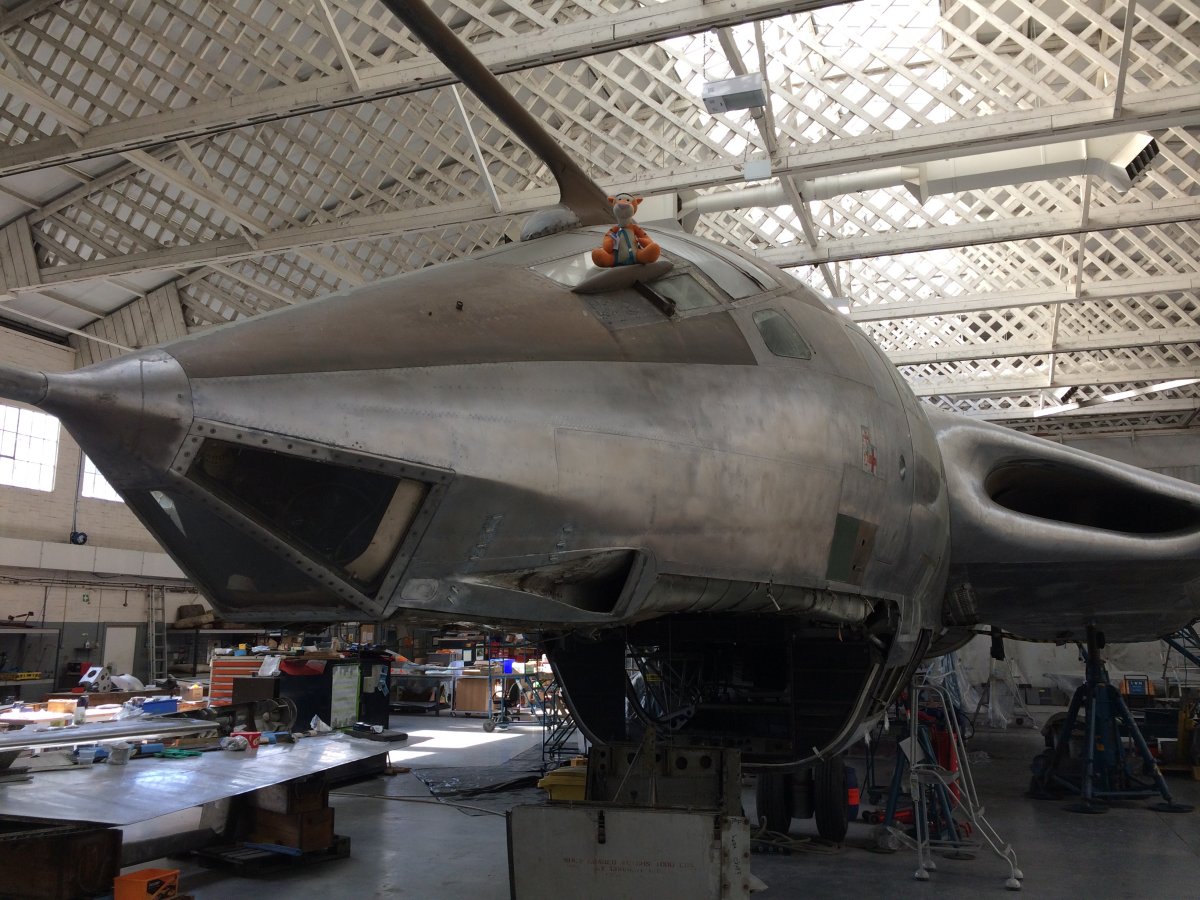 |
|
The very large Avro Shackleton MR3 which was used for maritime patrol and later airborne early warning. 185 were built; it had a long run: from 1951 to 1991. |
| |
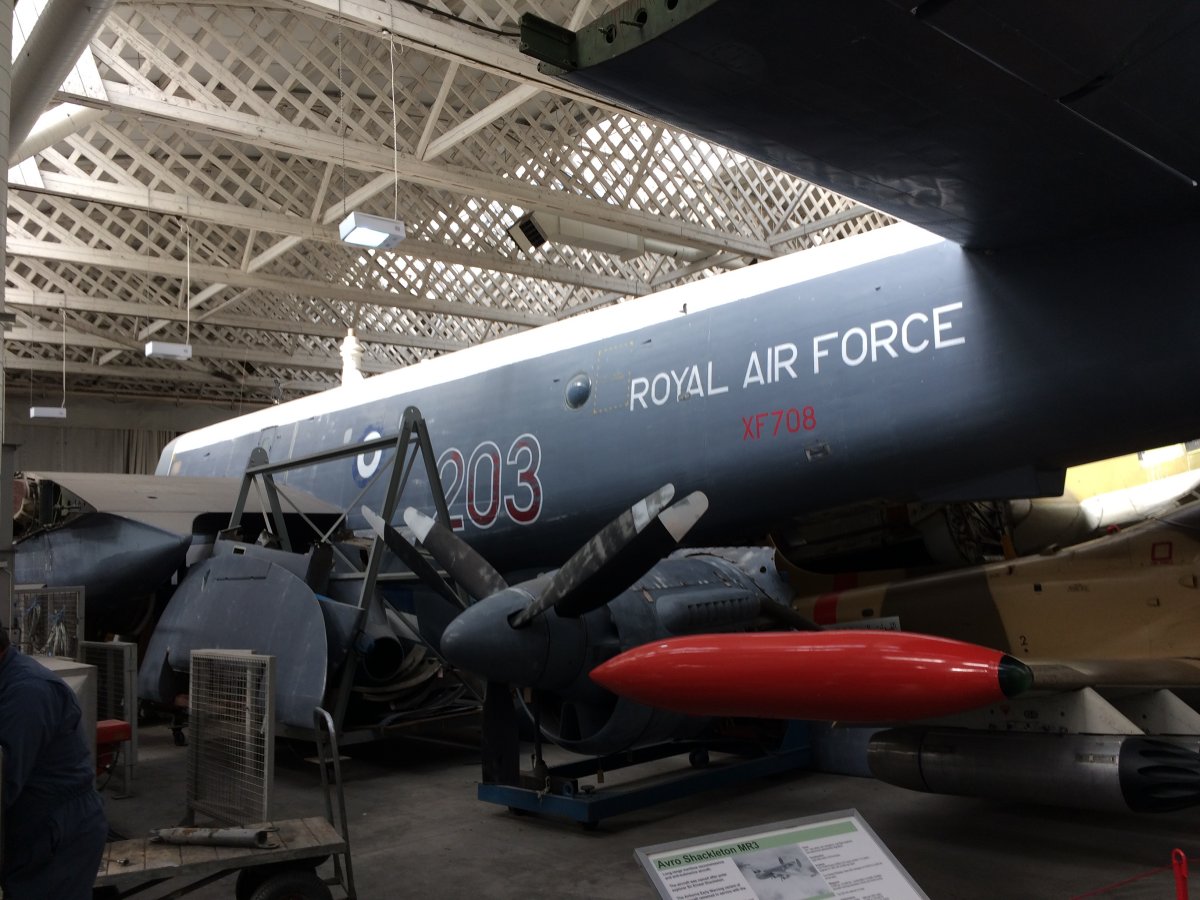 |
|
| A German Heinkel He-111 airframe sits in the back of the hangar, patiently awaiting restoration. |
| |
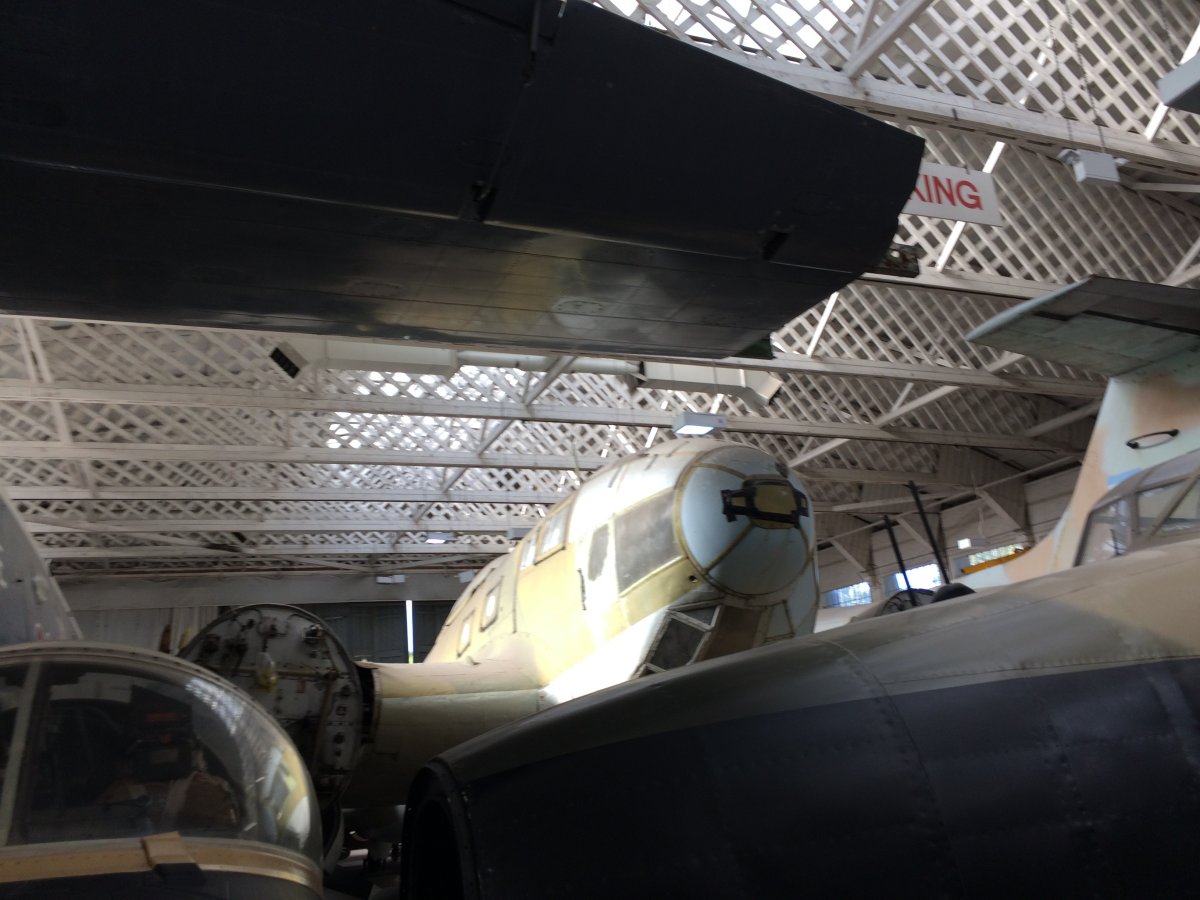 |
|
| The nose of a Handley Page Halifax, a British four-engine heavy bomber from World War II. |
| |
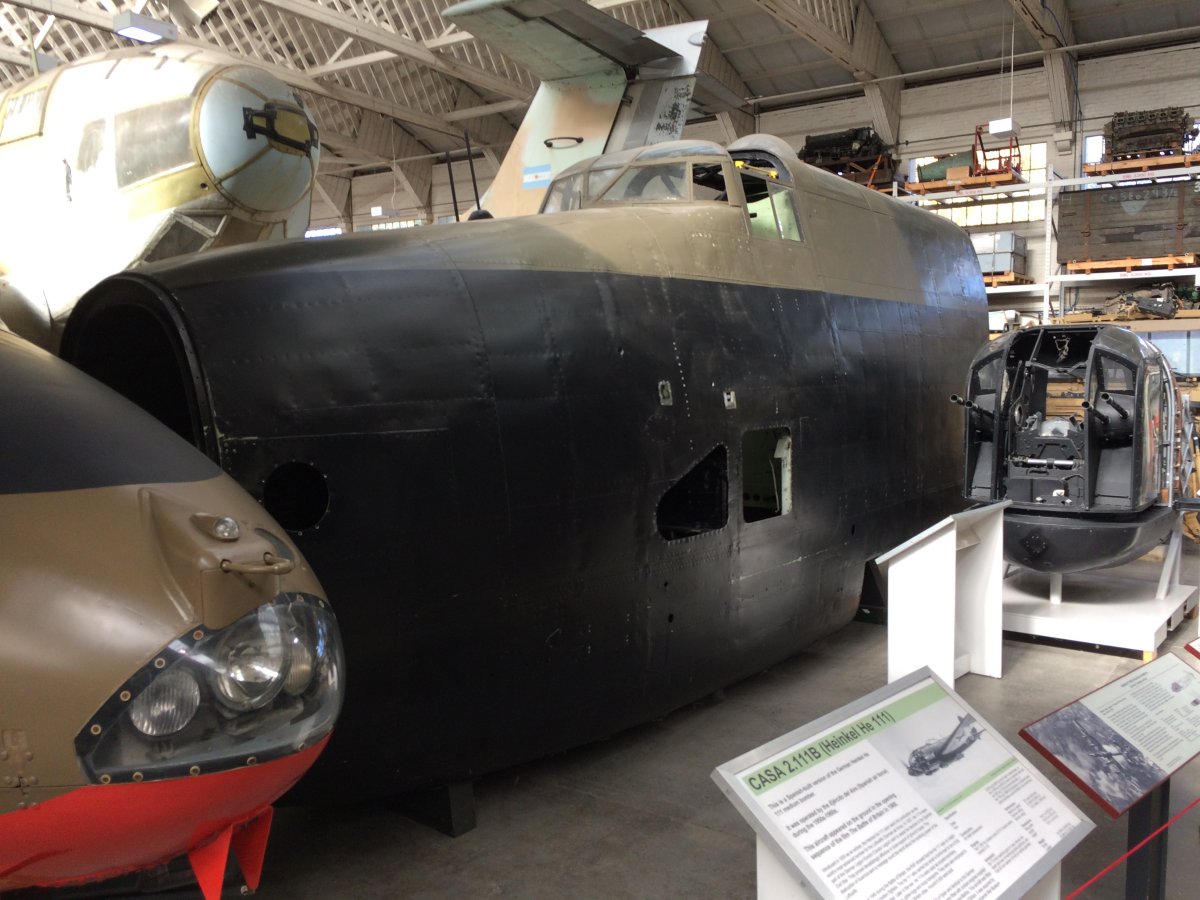 |
|
| XXX |
| Next was this original 1940 Operations Room from where the fighter squadrons were vectored into combat using radar data. It may not look like much, but in 1940 this was leading edge for air defense. If the British hadn't had it, the Battle of Britain may have turned out differently. |
| |
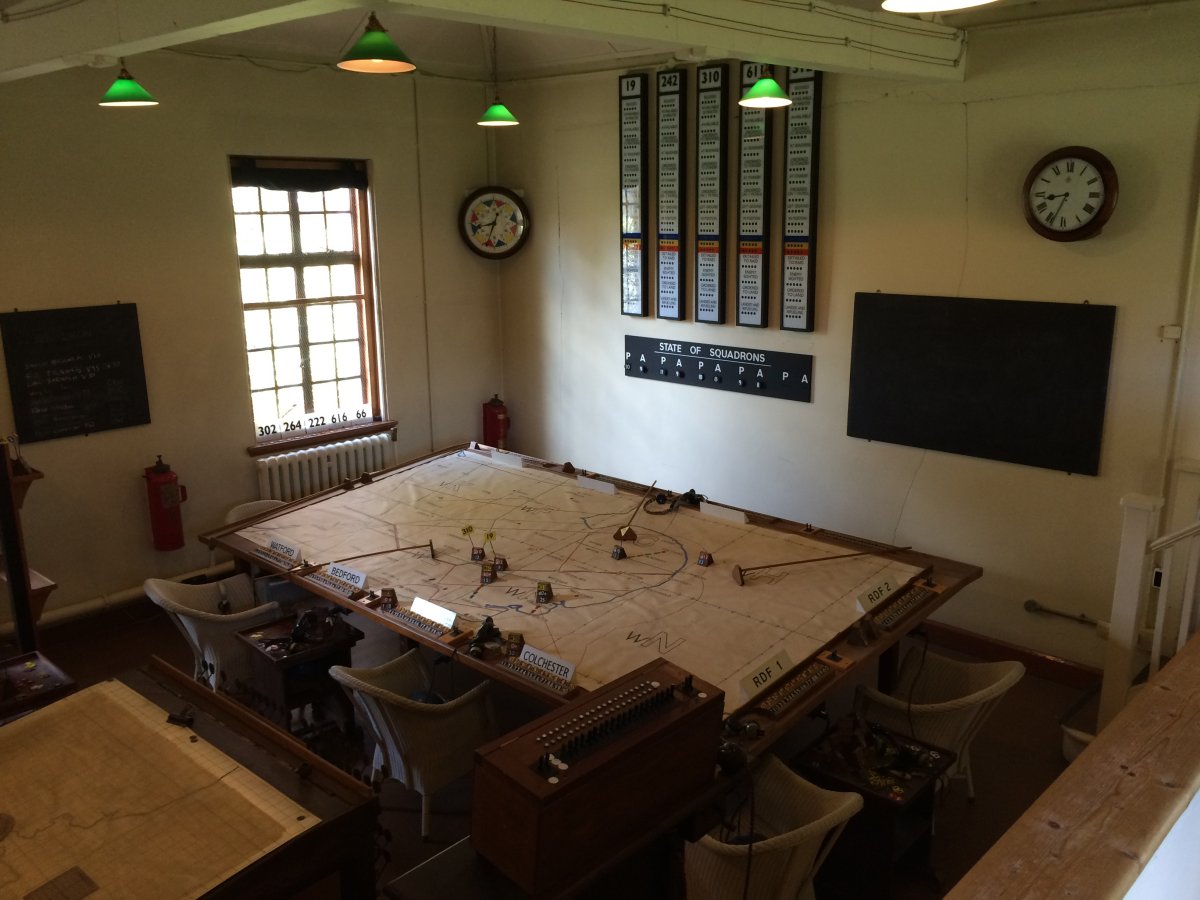 |
|
|
The other side of the room, where the commander could look down and monitor the status.
Duxford is north of London and was outside of the short combat range of the Messerschmidt fighters. As a result, it was never bombed during the Battle of Britain.
|
| |
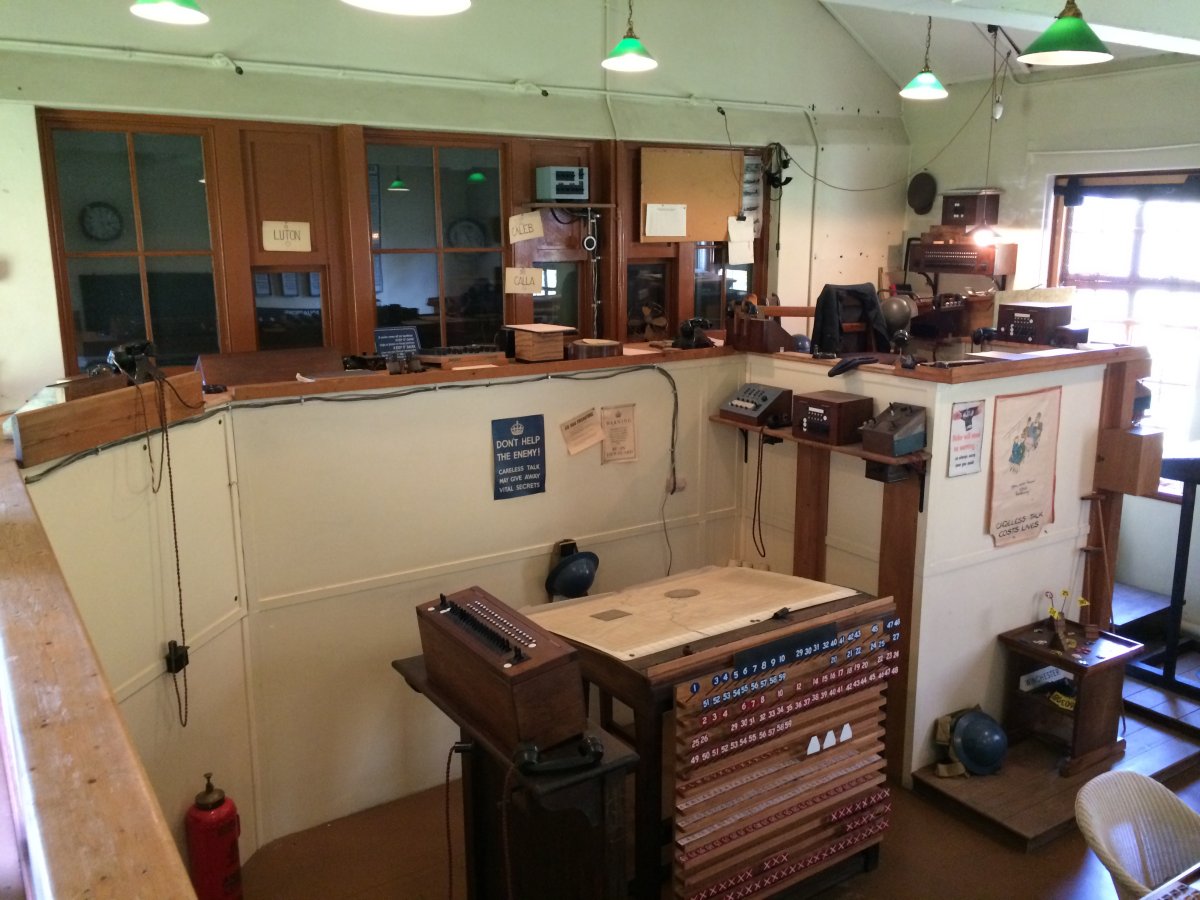 |
|
|
We headed over to the American Air Museum which I was very impressed with. It was designed by a famous British architect and opened in 1997. Duxford was home to the US Eighth Air Force’s 78th Fighter Group from 1943–45.
|
| |
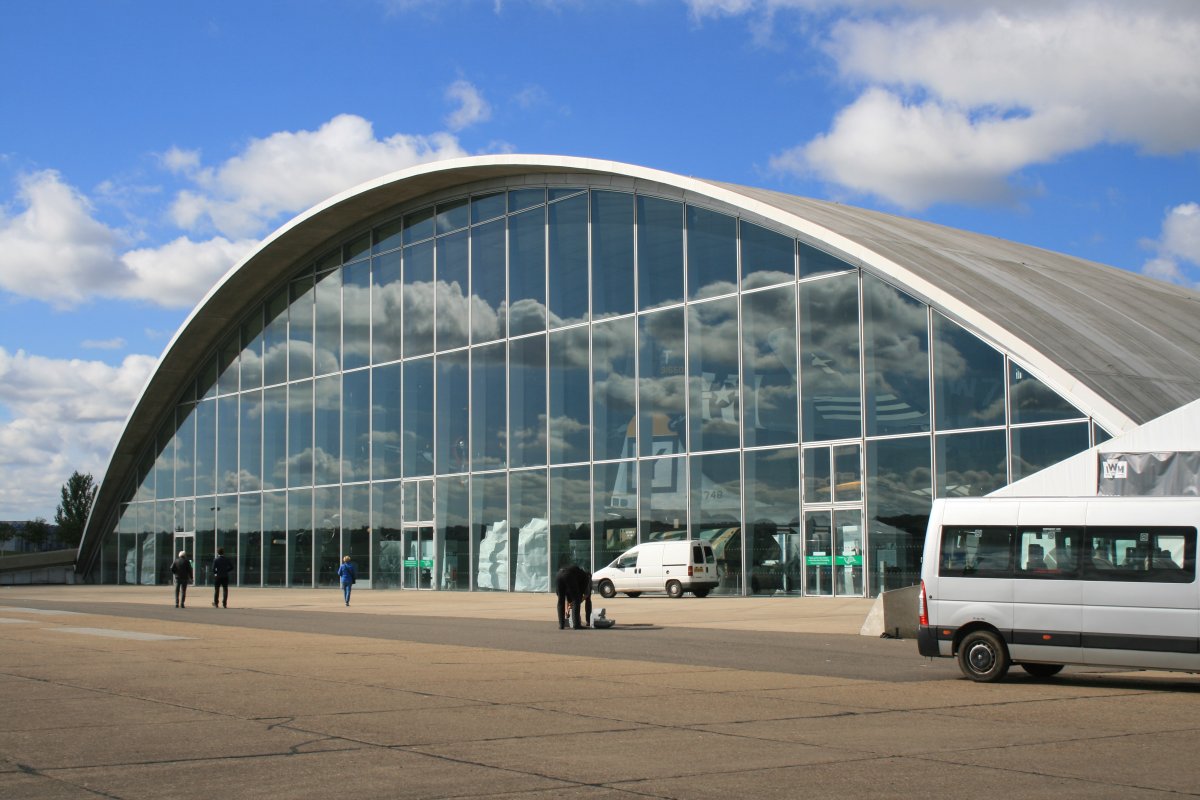 |
|
| At the back of the museum was this wall -- sort of like the Vietnam Memorial -- showing every single American aircraft lost flying from UK bases in WWII. |
| |
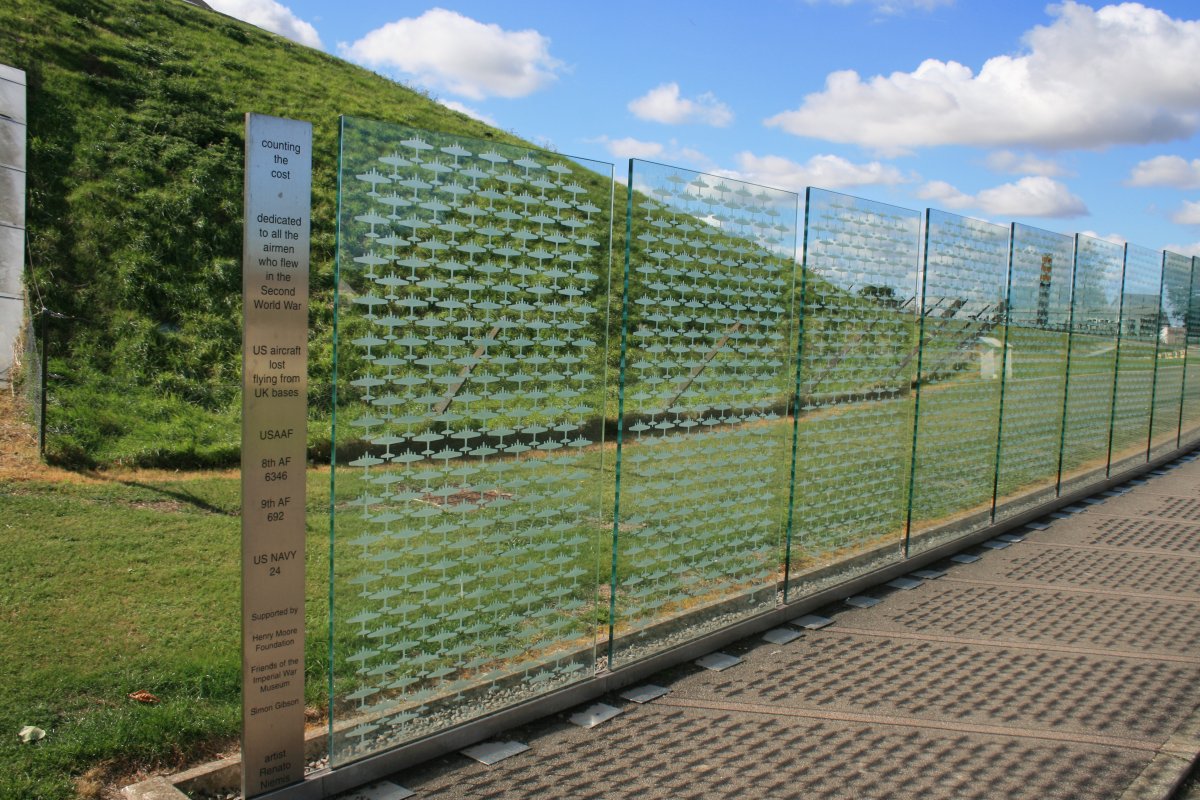 |
|
| They have managed to fit quite a few airplanes in this hangar including a big B-52. There was a lot of World War II stuff but also from the Cold War which I thought was appropriate. |
| |
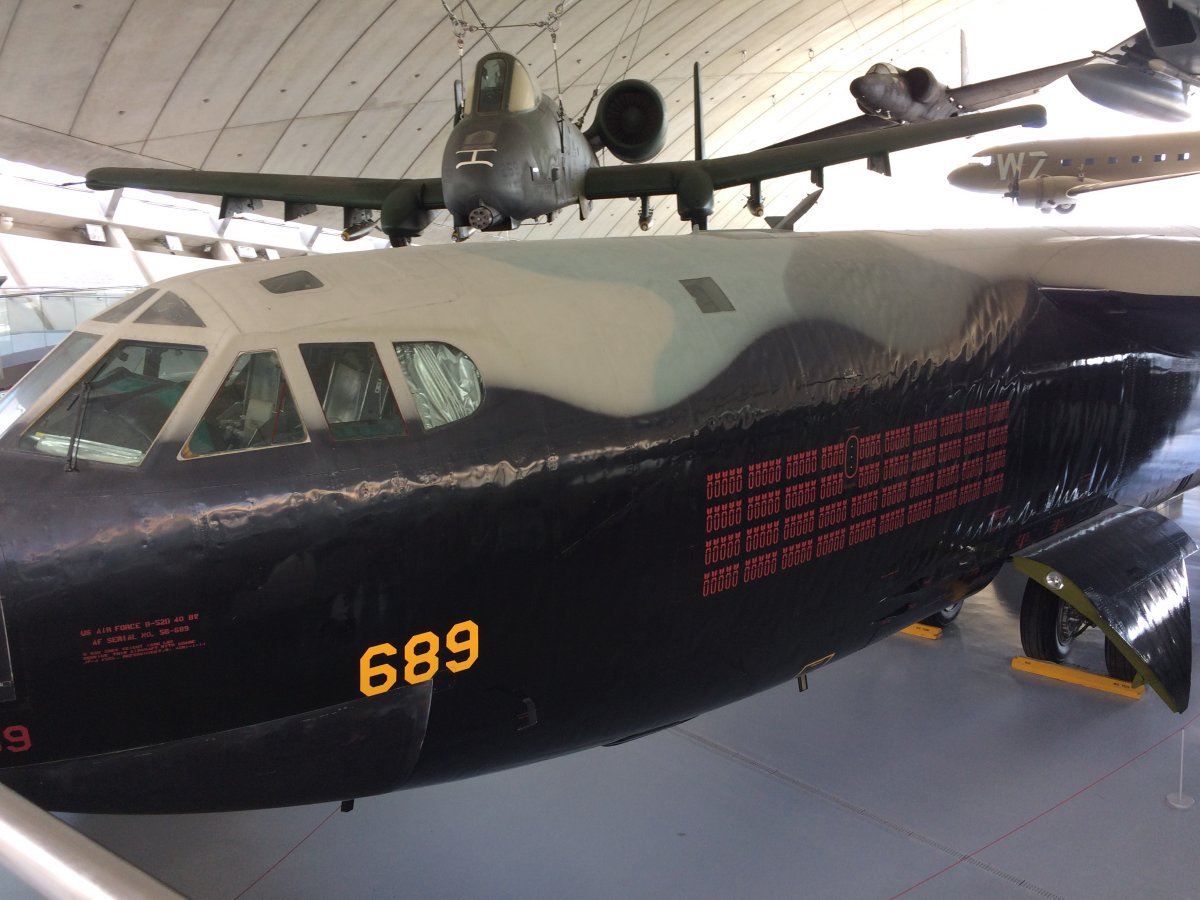 |
|
| Next to a little itty-bitty SPAD from World War I. The SPAD was actually a French plane, but American pilots flew it. |
| |
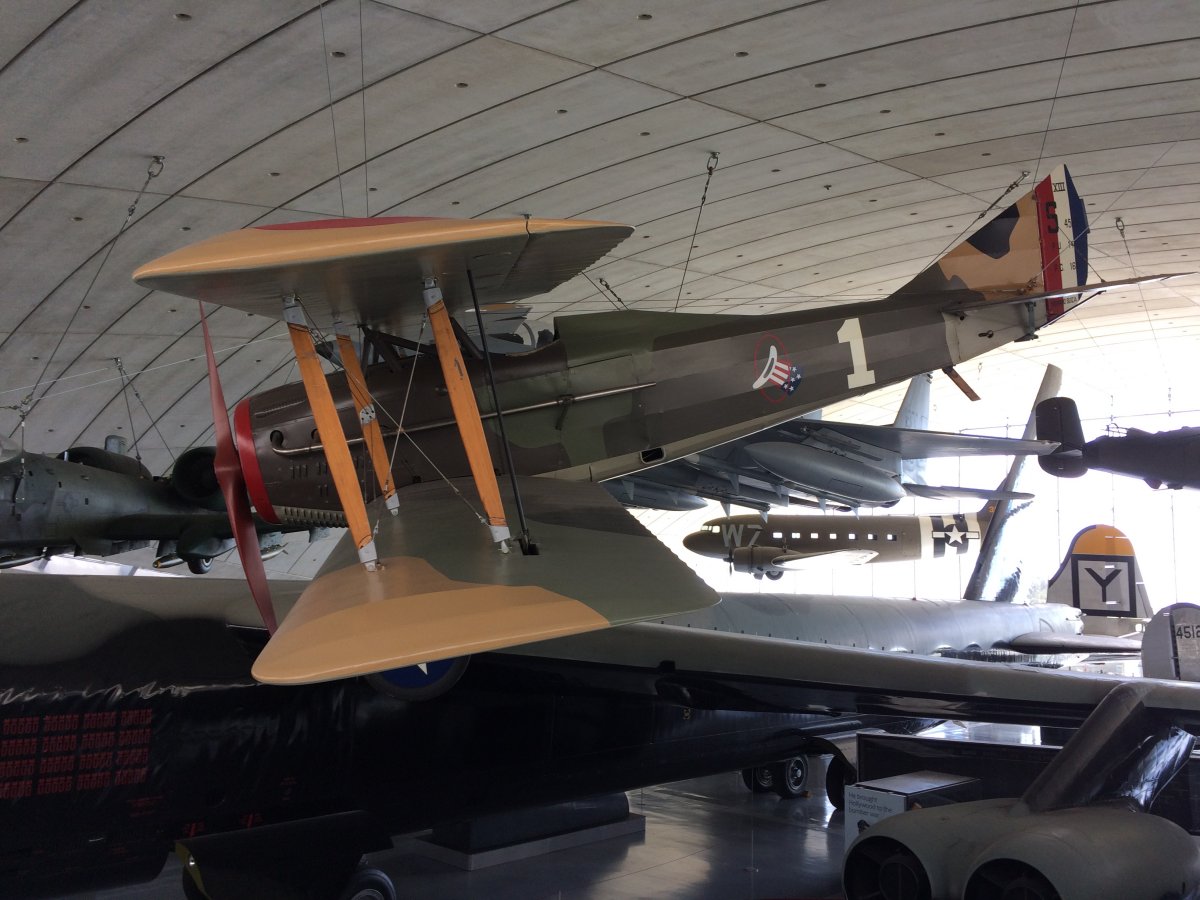 |
|
|
An F-15 and A-10 hang from the overhead with an F-4 Phantom in the foreground.
|
| |
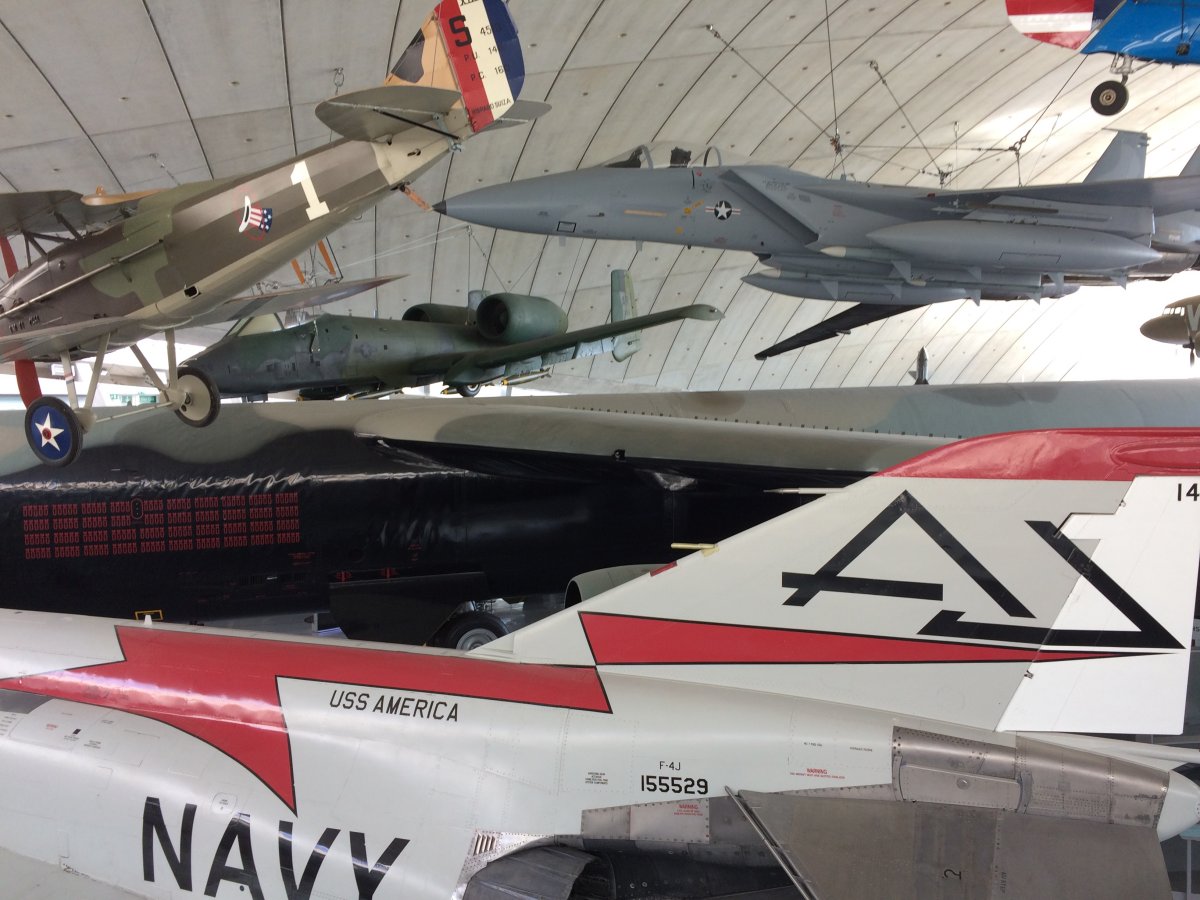 |
|
| The World War II mainstay American fighters -- the P-51 Mustang and P-47 Thunderbolt -- face out the hangar glass face. |
| |
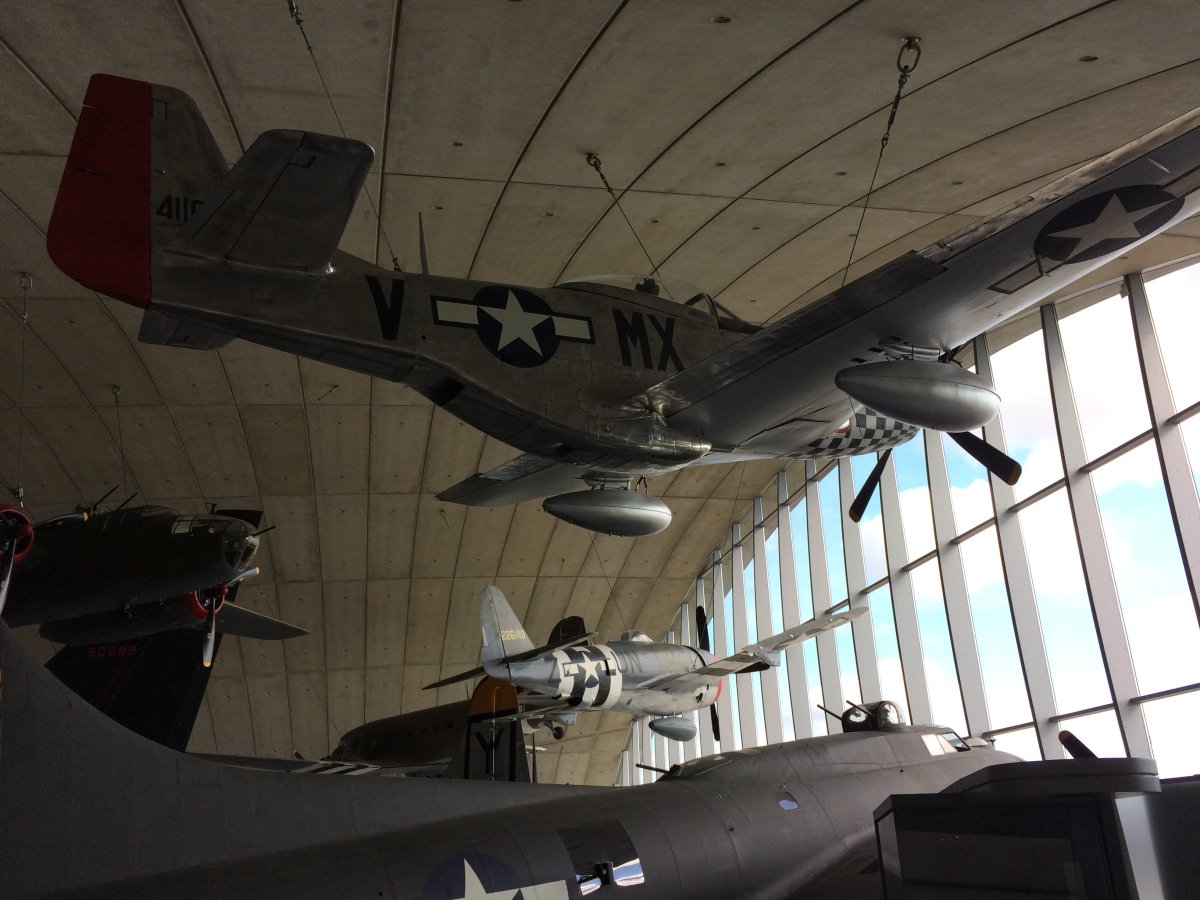 |
|
|
The B-24 Liberator was not only a heavy bomber but was very effective in the martime patrol role and played a big part in defeating the U-Boats. There was also a B-17, B-29 and B-25 in the museum. I don't know how they fit them all in!
|
| |
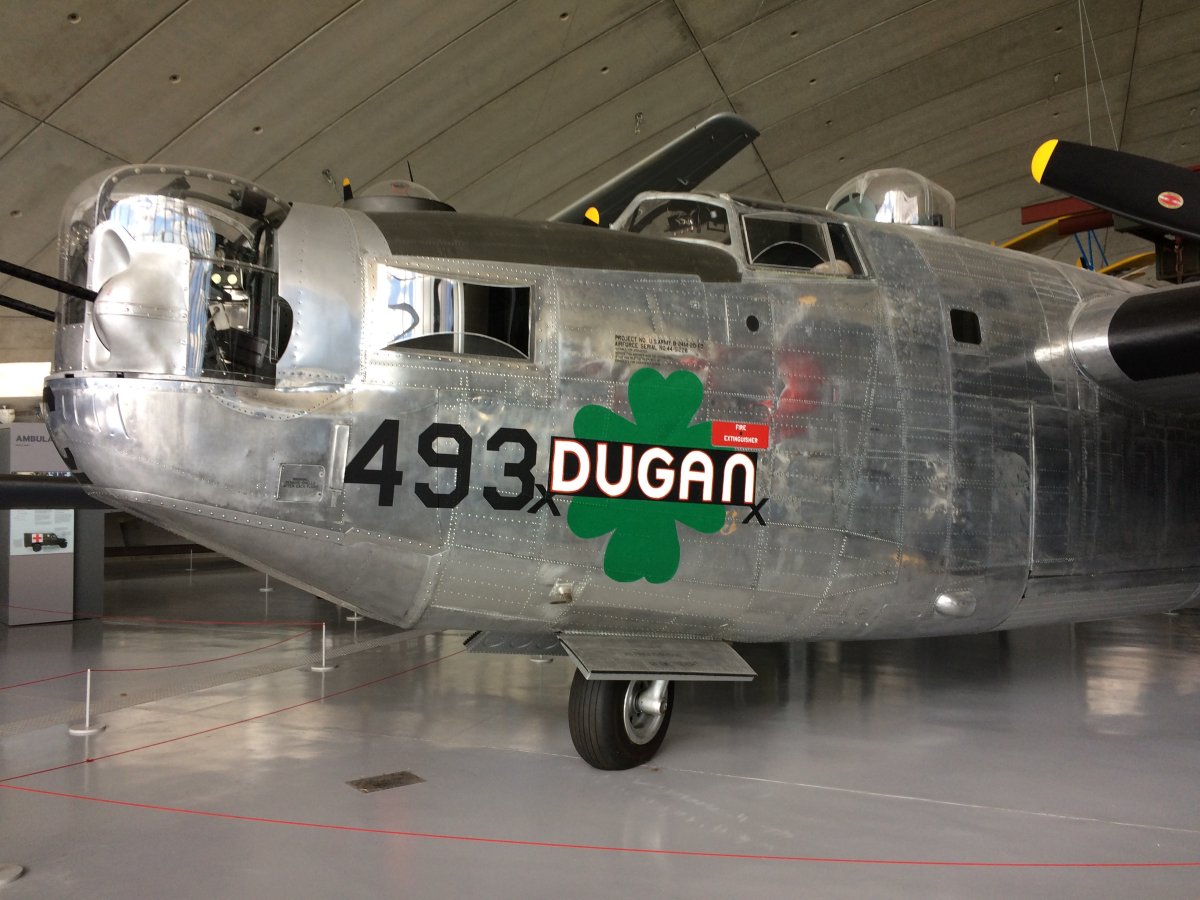 |
|
|
A U-2 spyplane flies overhead the superfast SR-71.
I had considered skipping the American Air Museum because I figured I had seen enough American warbirds, but I'm glad I checked it out; they did such a nice job with it.
|
| |
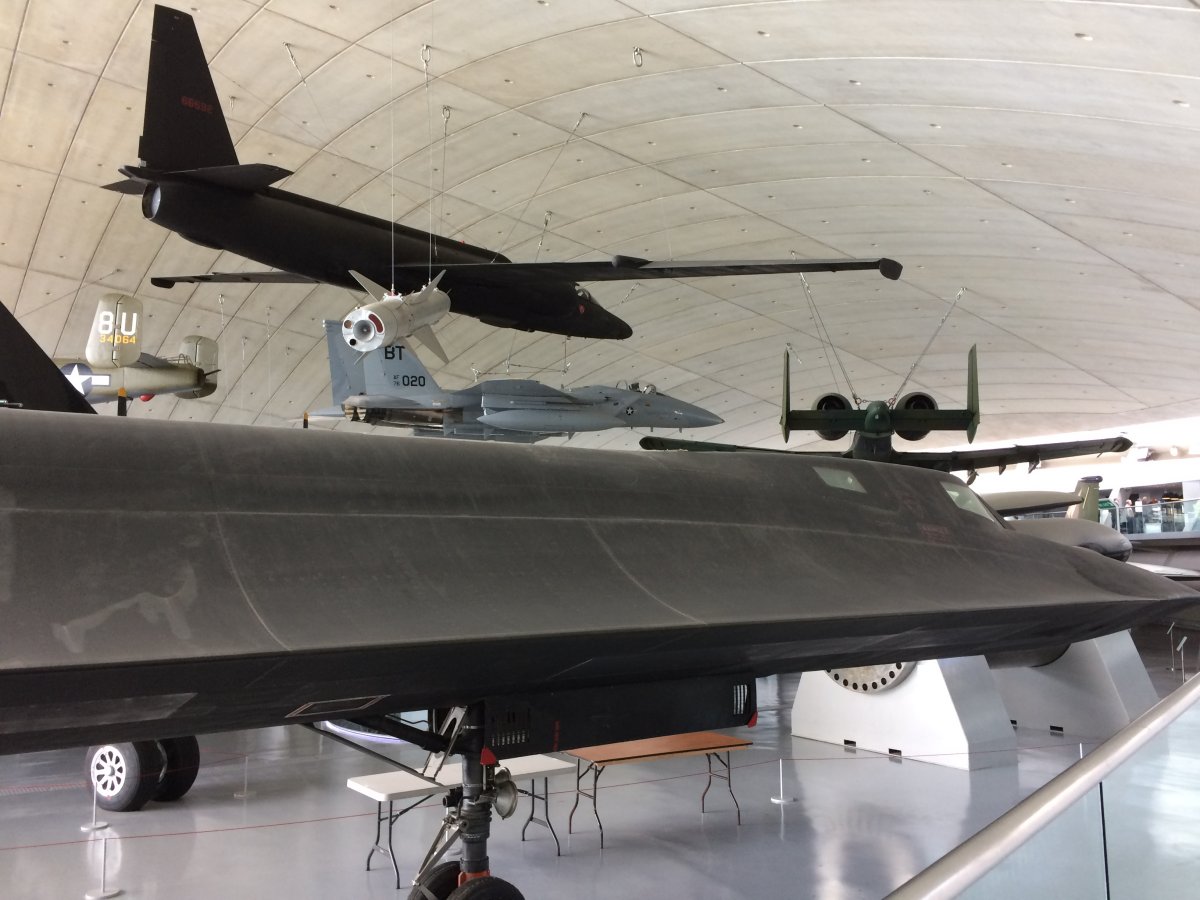 |
|
| The last hangar we visited was the Air and Sea hangar. A Hawker Fury, a biplane fighter for the Royal Air Force during the early 1930's that had pretty good speed, over 200 mph. It was an excellent aerobatic airplane. |
| |
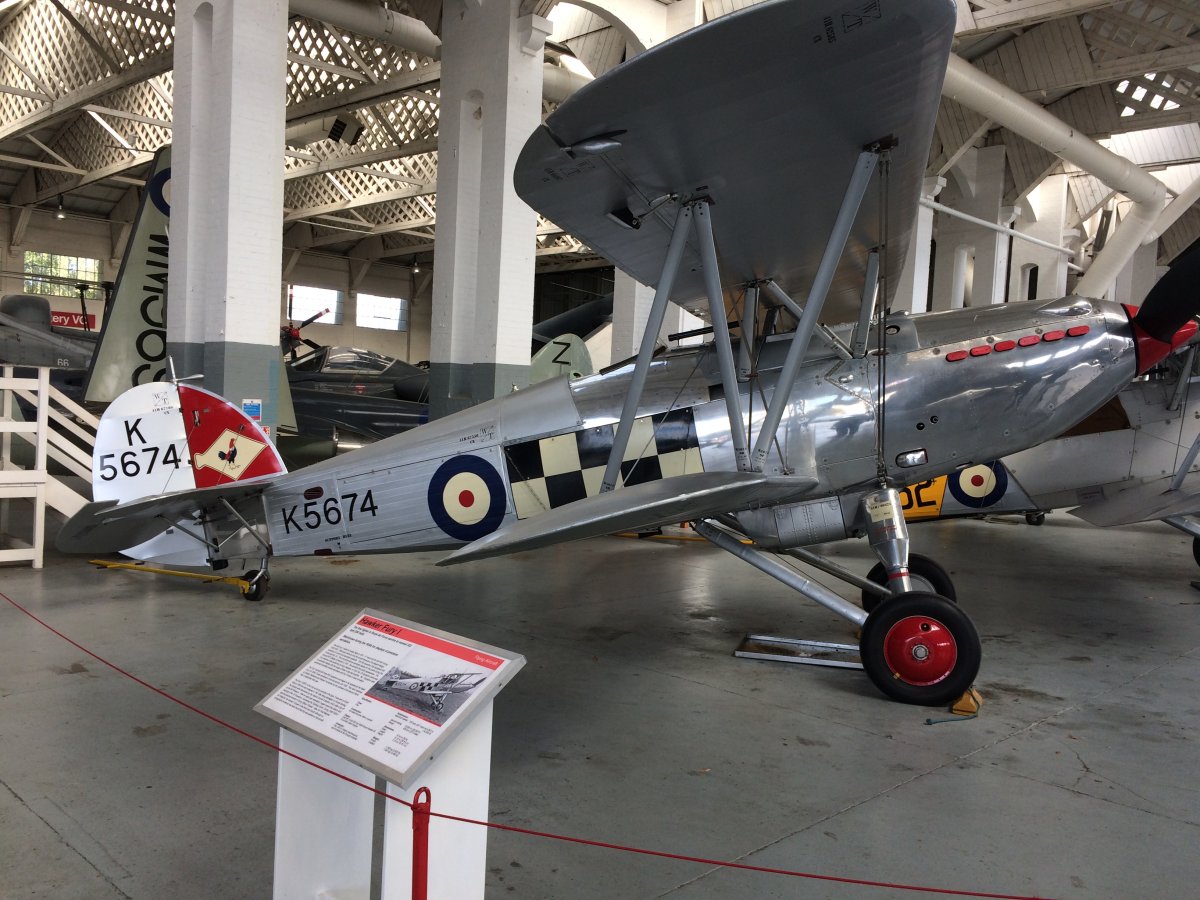 |
|
| XXX |
| That's a Hawker Nimrod MKII on the left, with a Hurricane to its right, and a Spitfire to its right. The Nimrod was developed from the Fury, for aircraft carrier duty, and served in the 1930s. |
| |
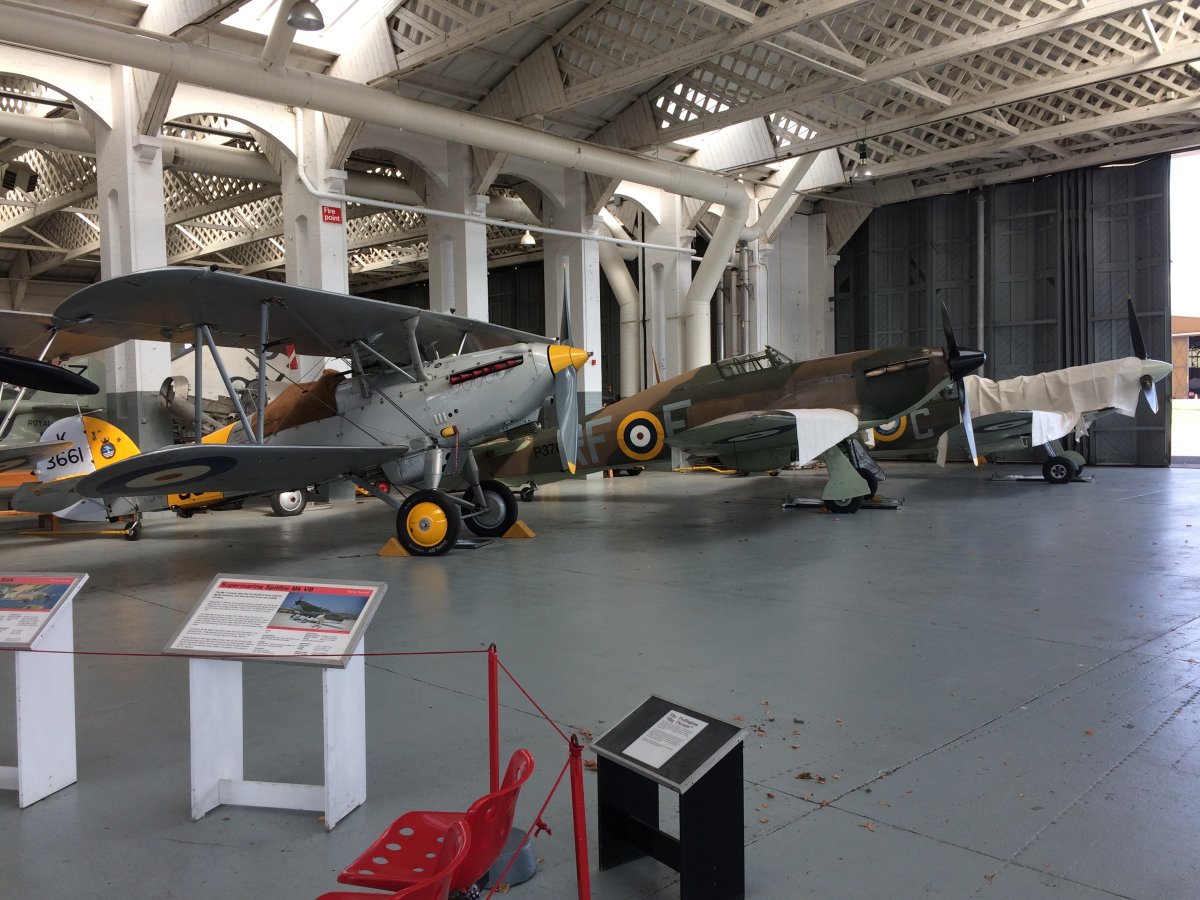 |
|
|
A Fairey Gannet, a very unusual looking carrier-borne anti-submarine warfare aircraft. It flew for the Royal Navy from 1955 to 1970.
|
| |
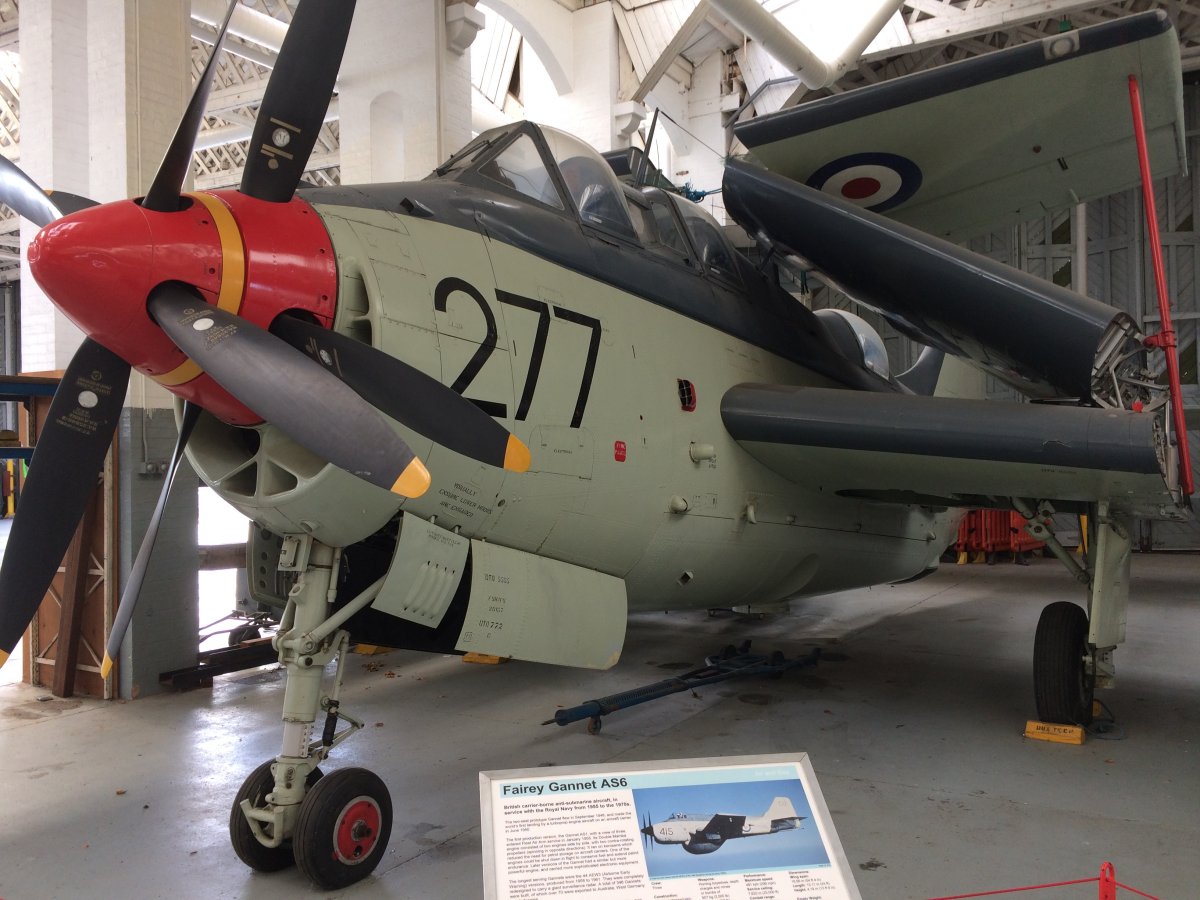 |
|
|
This is what the Gannet looks like in flight, plus a good example of the excellant placarding at IWM Dusford.
|
| |
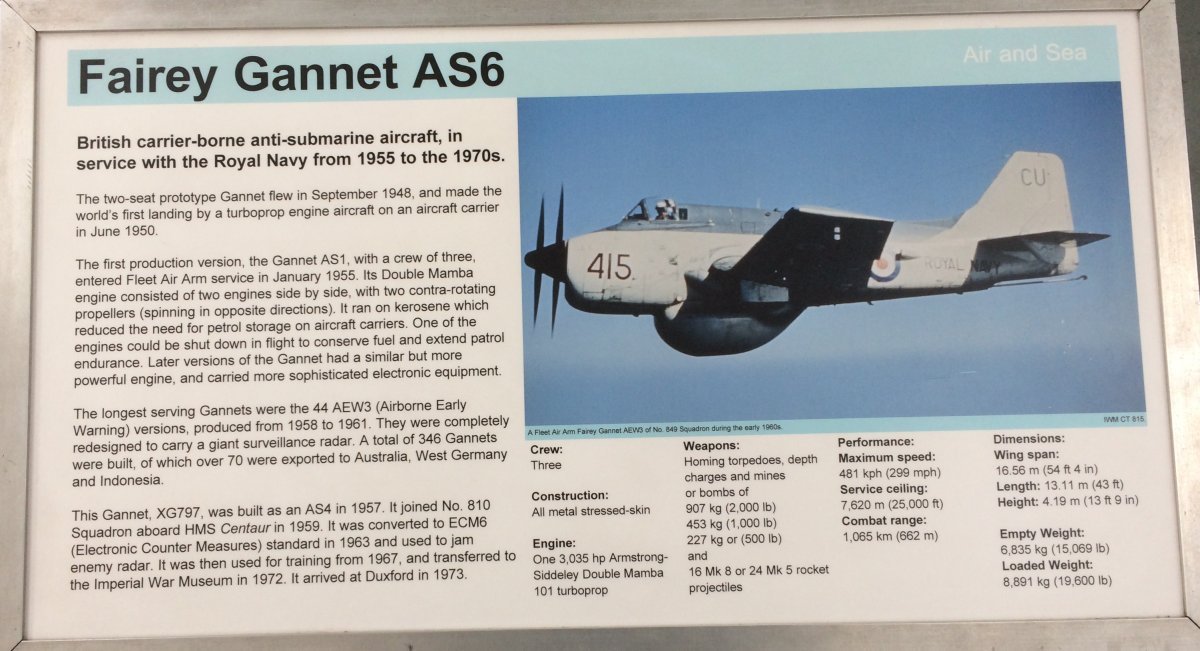 |
|
| XXX |
|
A Hawker-Siddeley Buccaneer, the world's first purpose built low-level strike aircraft, serving with the Royal Navy Fleet Air Arm and Royal Air Force, from the 1960s until the 1990s.
|
| |
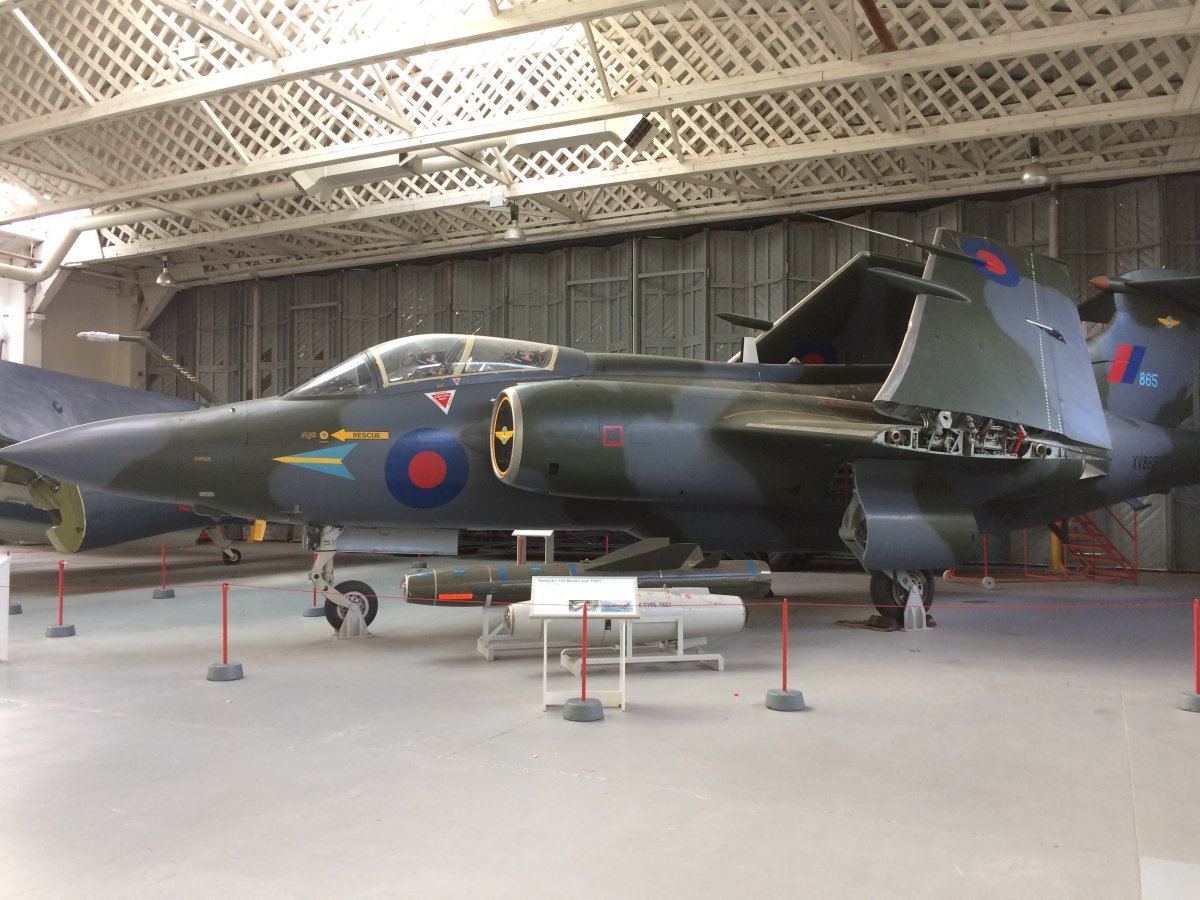 |
|
|
Of all the unusual British designs, this one takes the cake. Notice the cockpit on the left top side of the fuselage. This is a de Havilland Sea Vixen and was the Fleet Air Arm's principle carrier-borne fighter of the 1960s. It was a derivative of the Vampire series.
|
| |
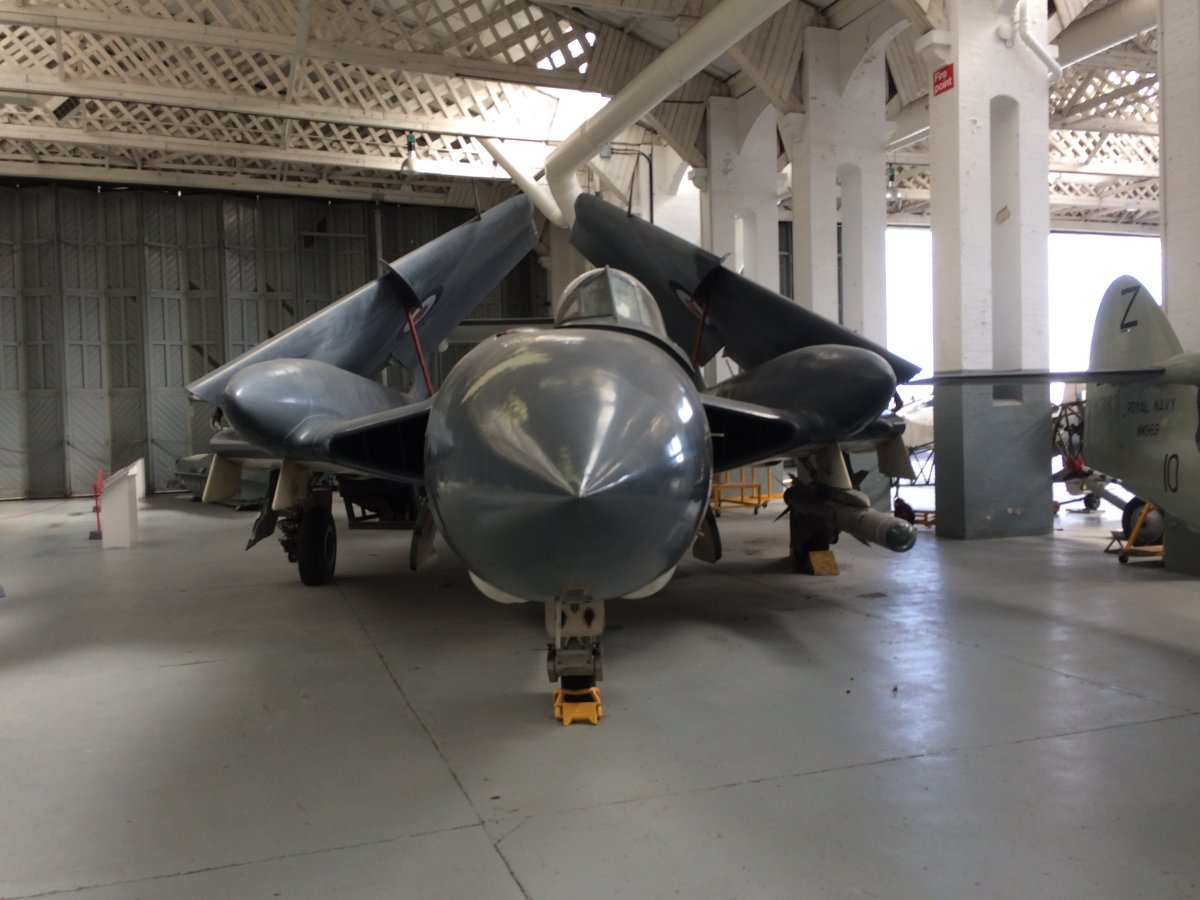 |
|
| The unusual cockpit arrangement makes the Sea Vixen deserving of another picture. |
| |
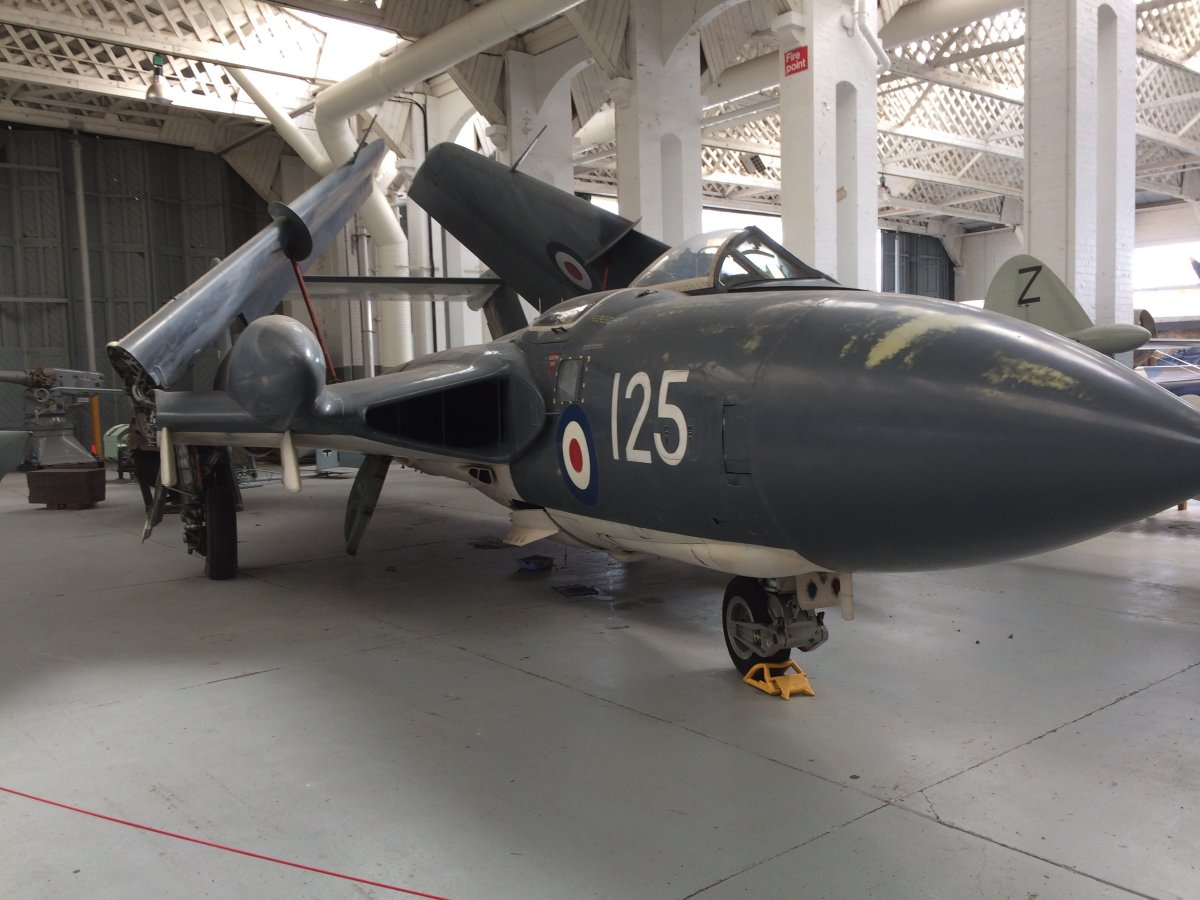 |
|
| The Sea Vixen is one unusual airplane! |
| |
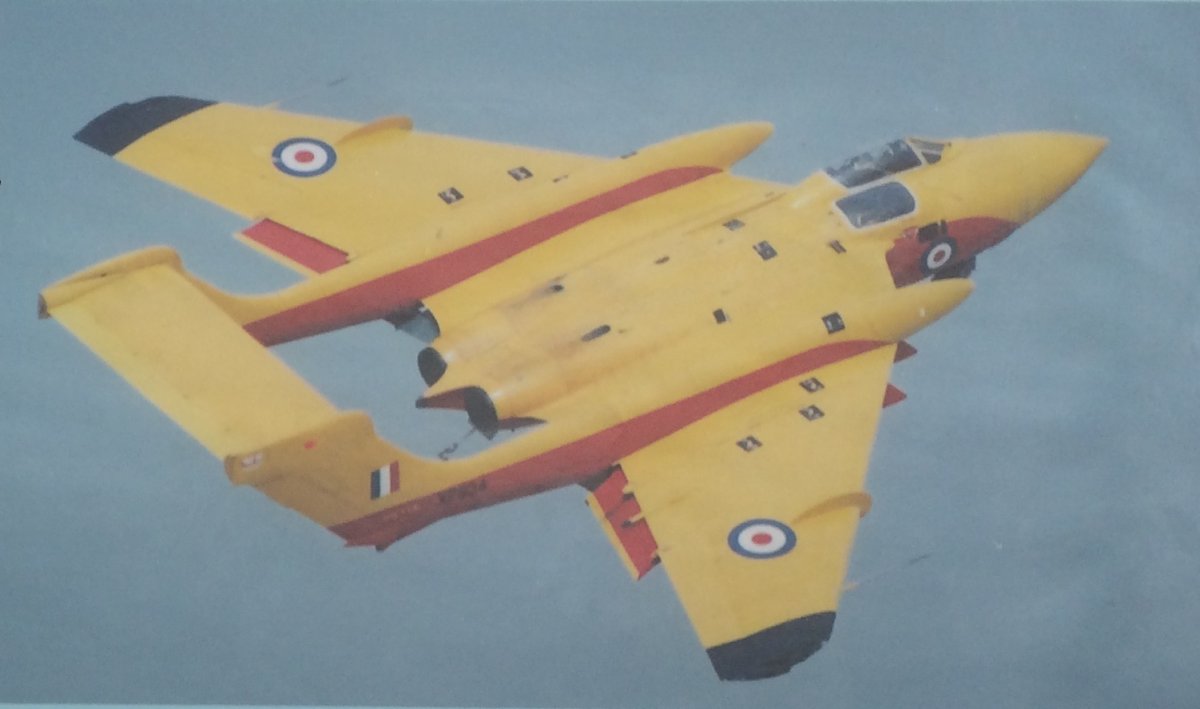 |
|
| We were here on a Monday. Over the weekend, they had a big weekend airshow, so there were still a lot of warbirds parked out on the line. There are two Yak fighters on the left. |
| |
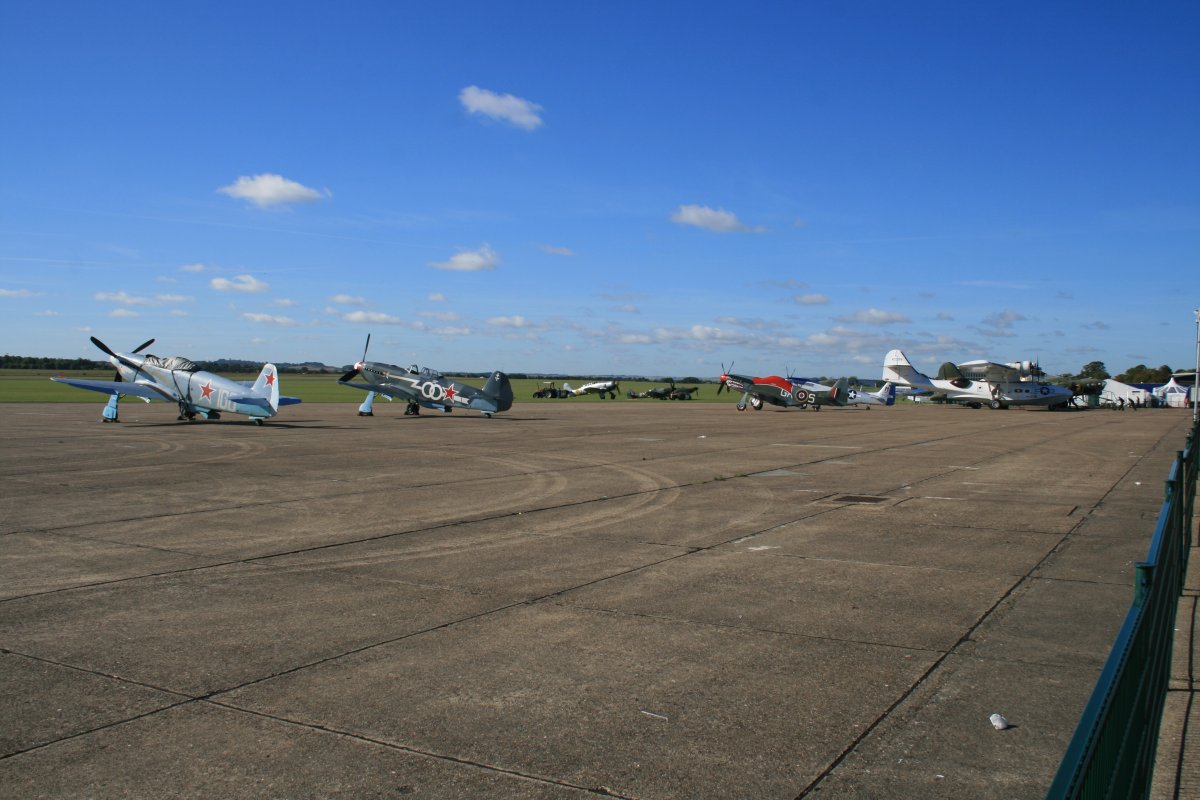 |
|
| A Vampire training jet. |
| |
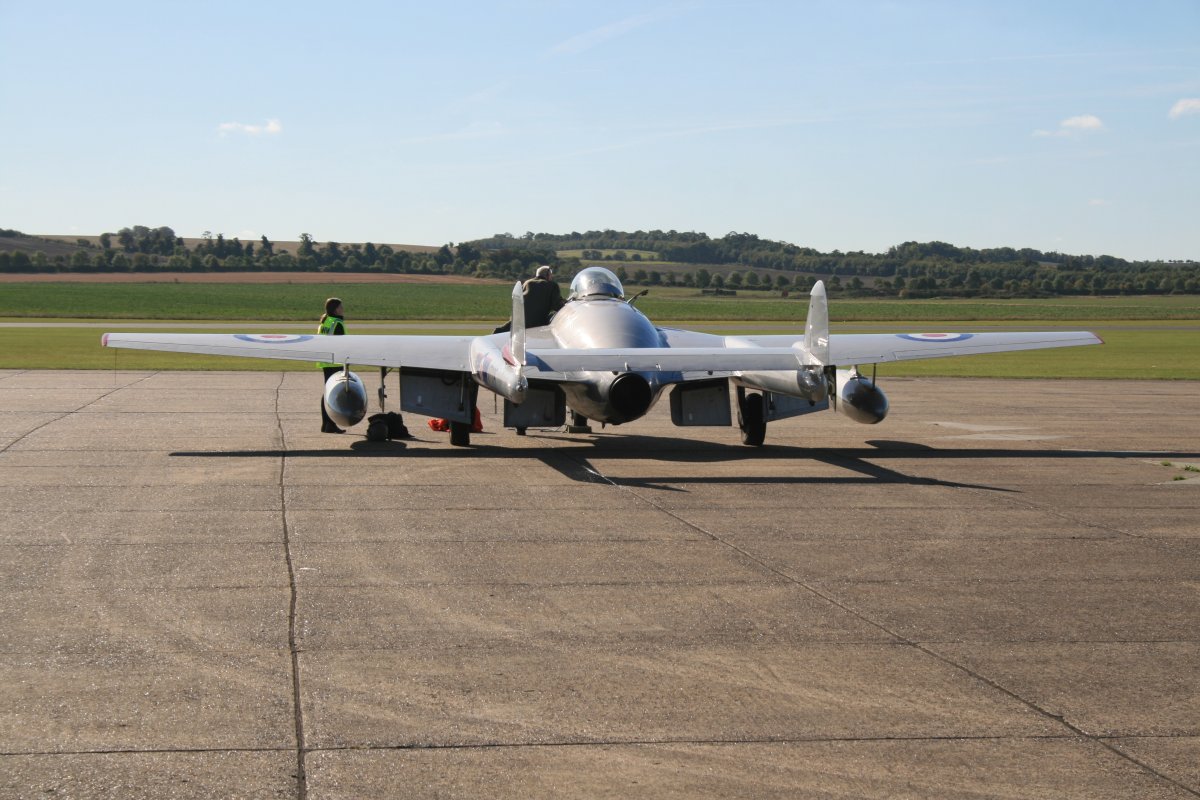 |
|
|
Mig-17.
|
| |
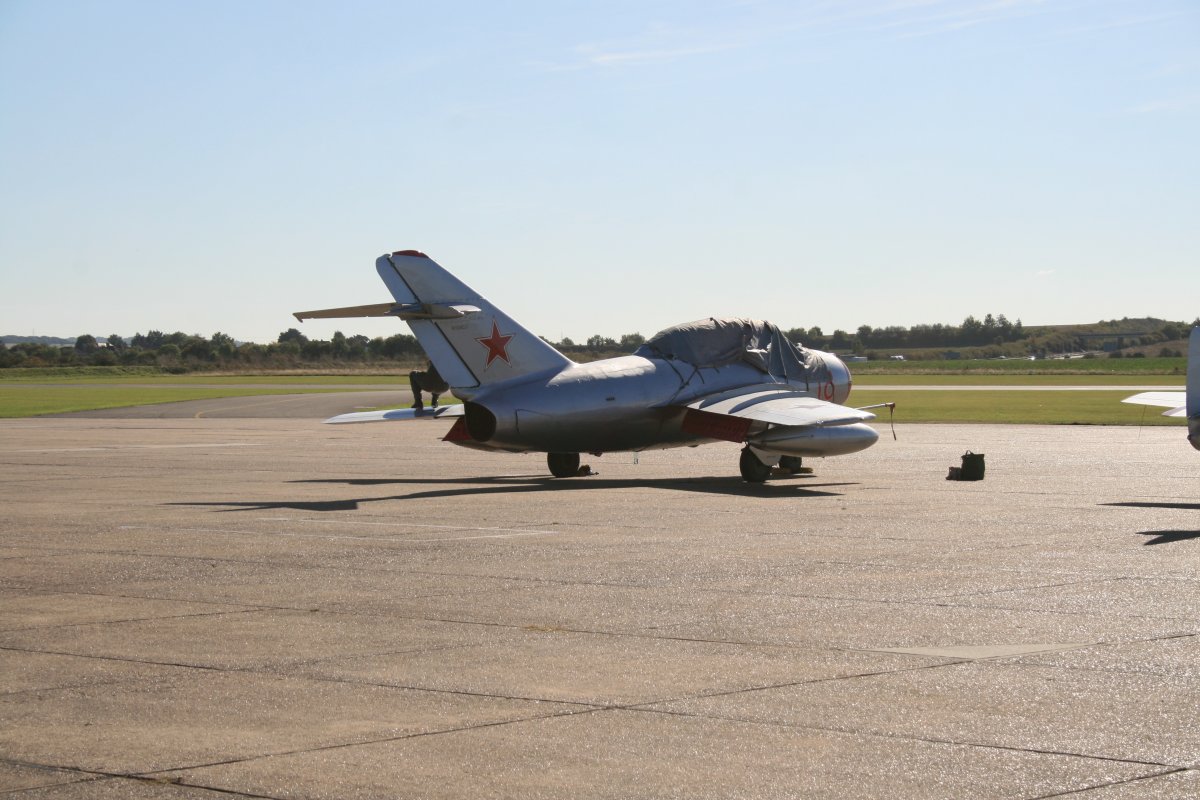 |
|
| Close-up of a Yak. |
| |
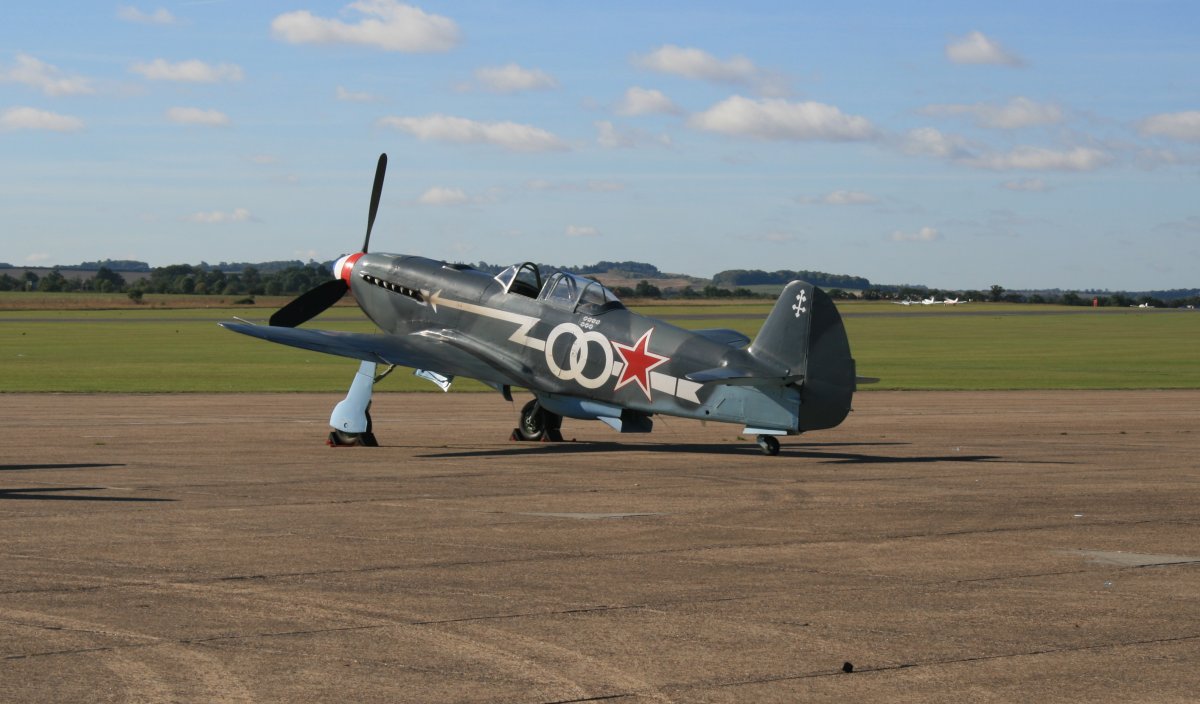 |
|
|
A plane that needs no introduction: two P-51 Mustangs.
|
| |
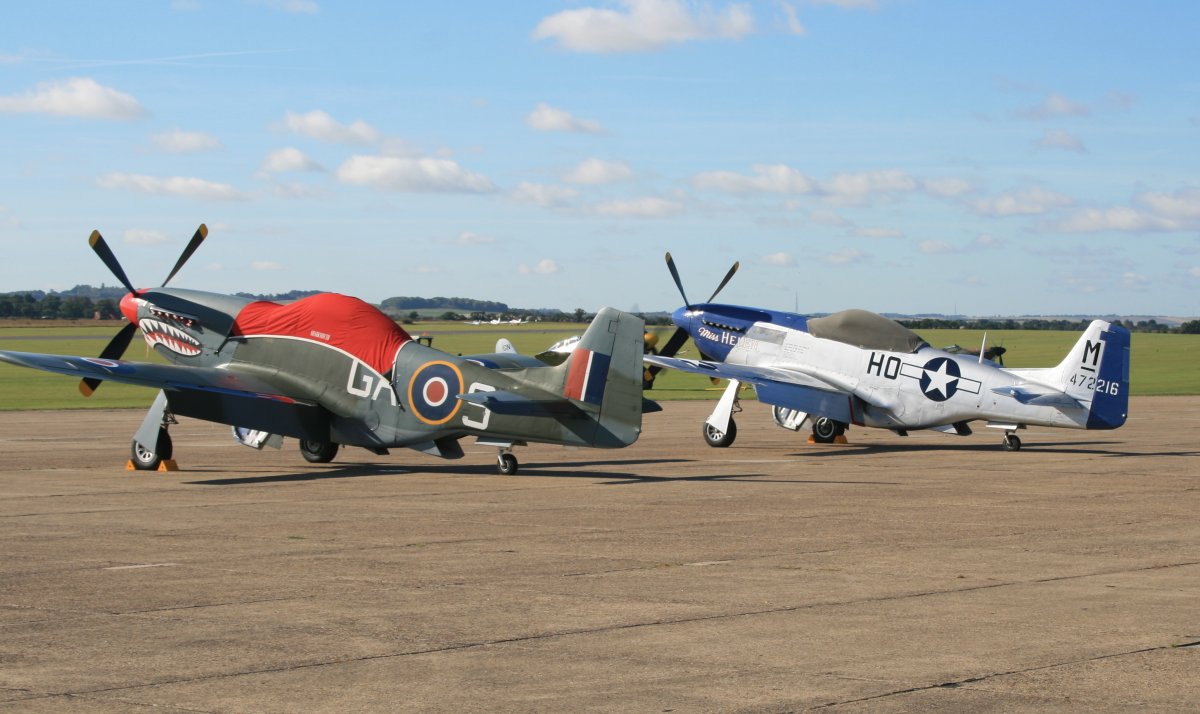 |
|
| A Spitfire and Hurricane parked on the grass. |
| |
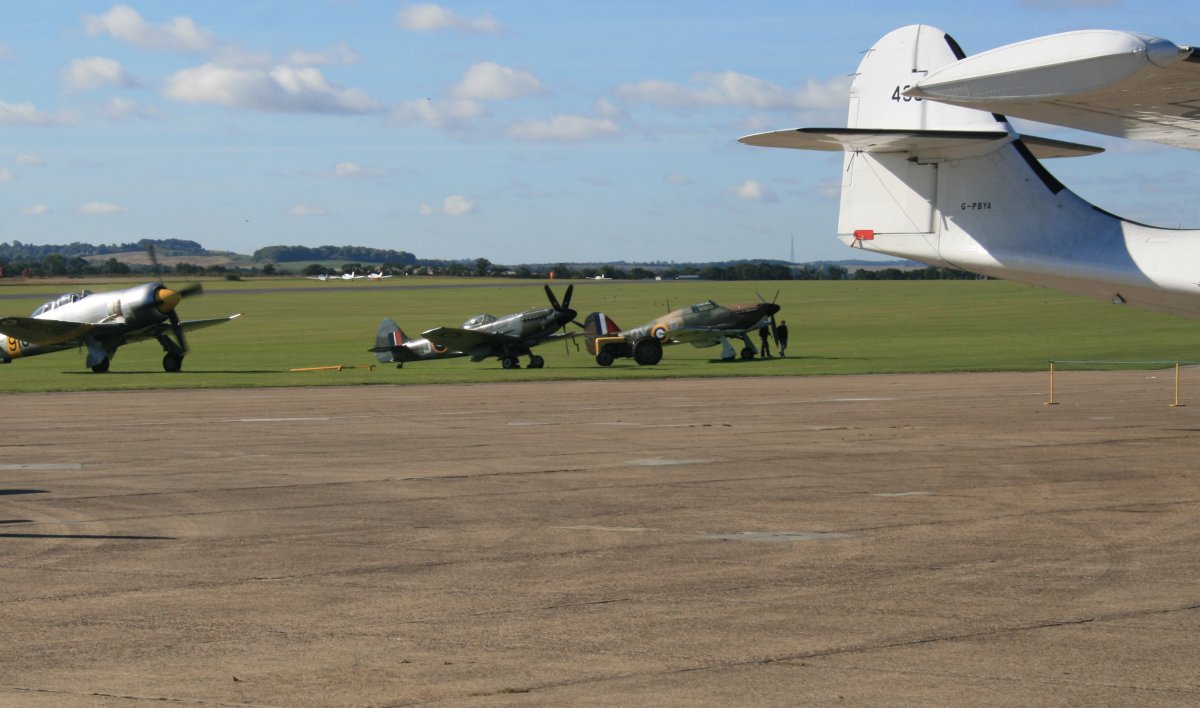 |
|
| PBY Catalina flying boat. |
| |
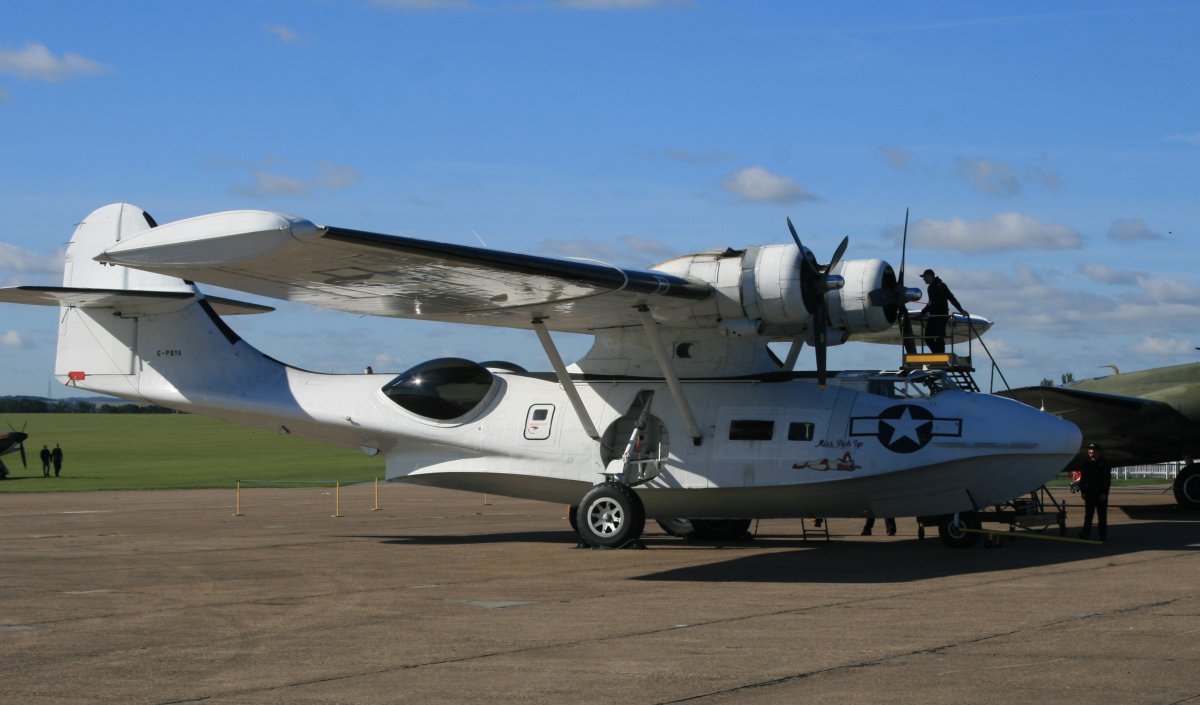 |
|
| XXX |
| Another plane that needs no introduction: a B-17 Flying Fortress. |
| |
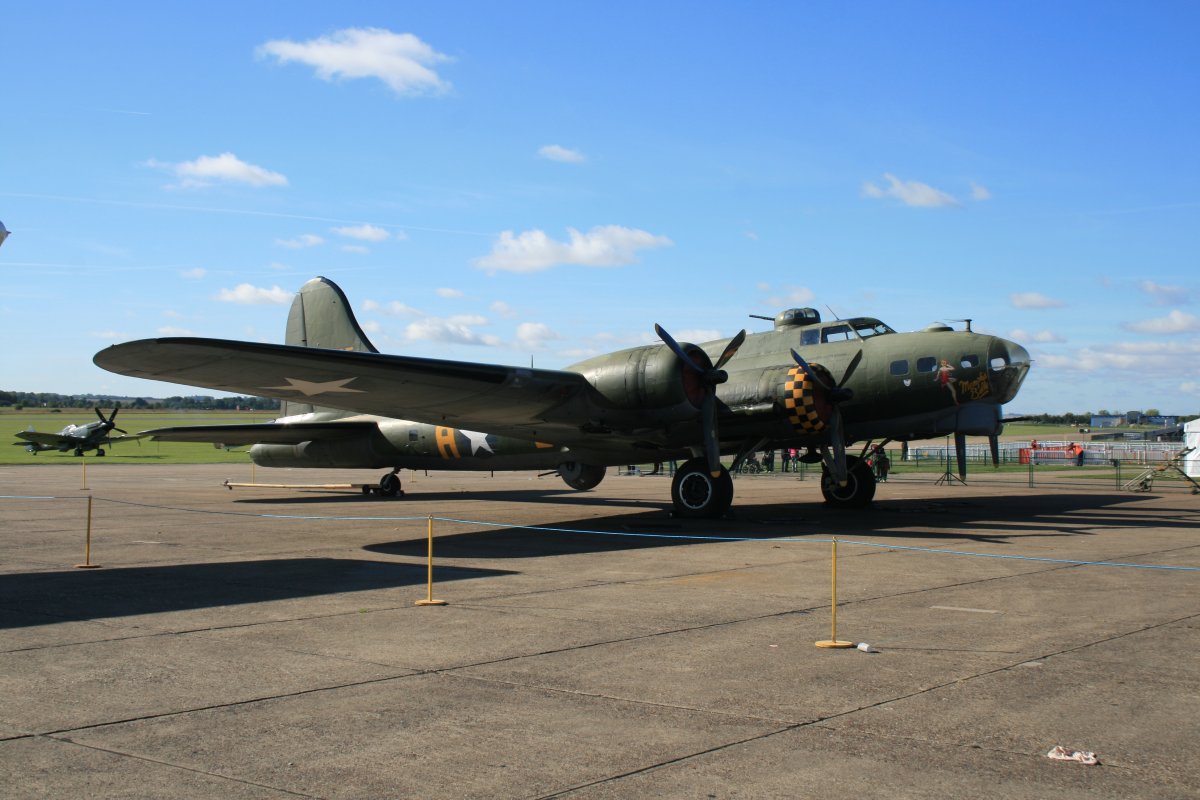 |
|
|
Close-up of the Hurricane.
|
| |
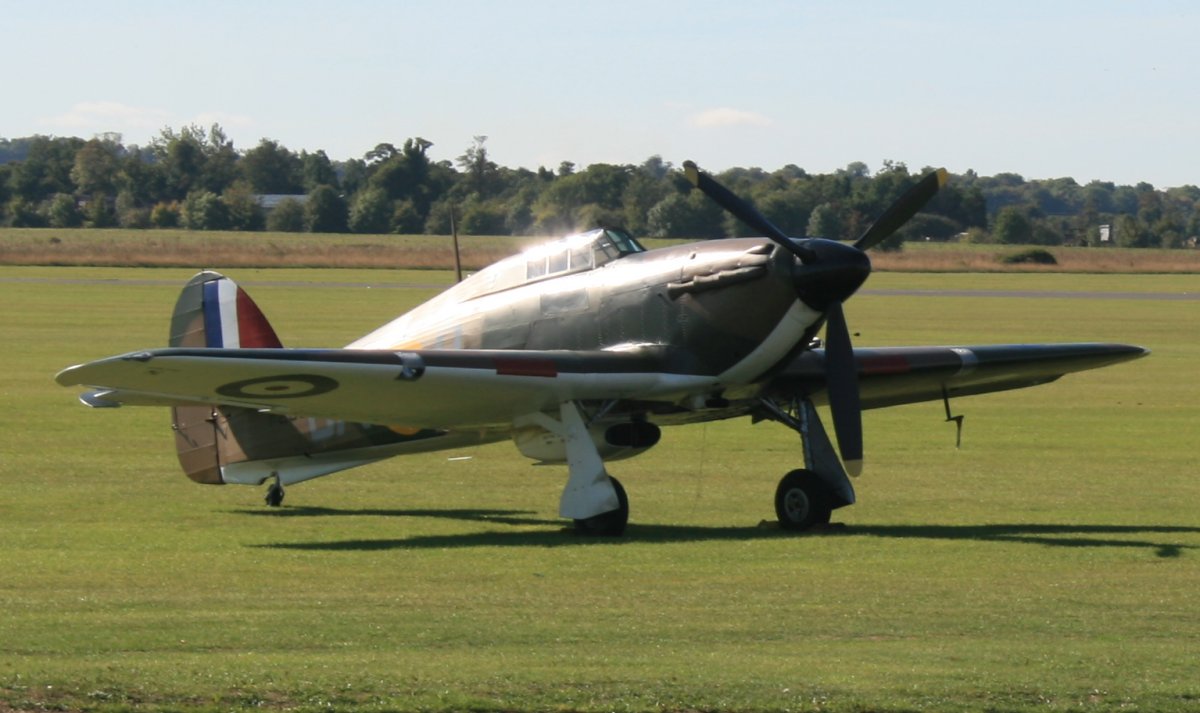 |
|
| XXX |
| Three Messerschmidt 109s. Actually, they are probably Hispano Aviación HA-1109s, license-built versions of the Messerschmitt Bf 109G-2 developed in Spain during and after World War II. Because they use a Hispano-Suizo engine, instead of the German Daimler-Benz 605, the front end just doesn't look right. I have a hard time dealing with it. |
| |
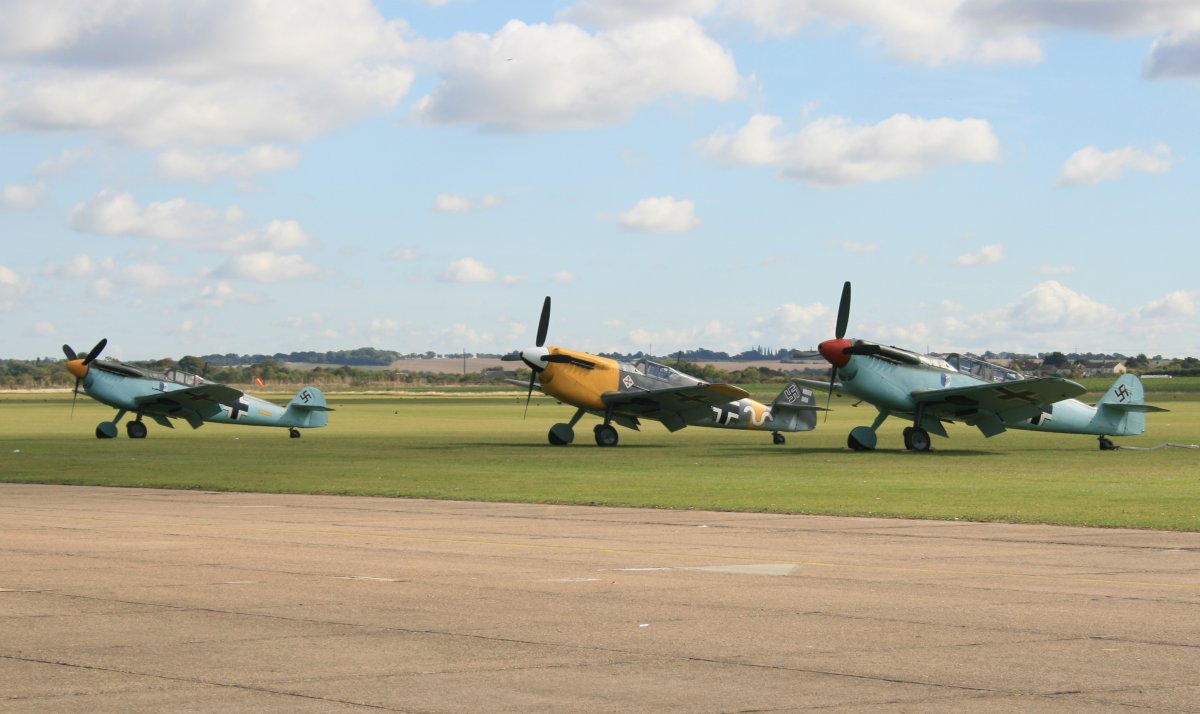 |
|
| A big P-47 Thunderbolt along with some Harvards and a Super Chipmunk. |
| |
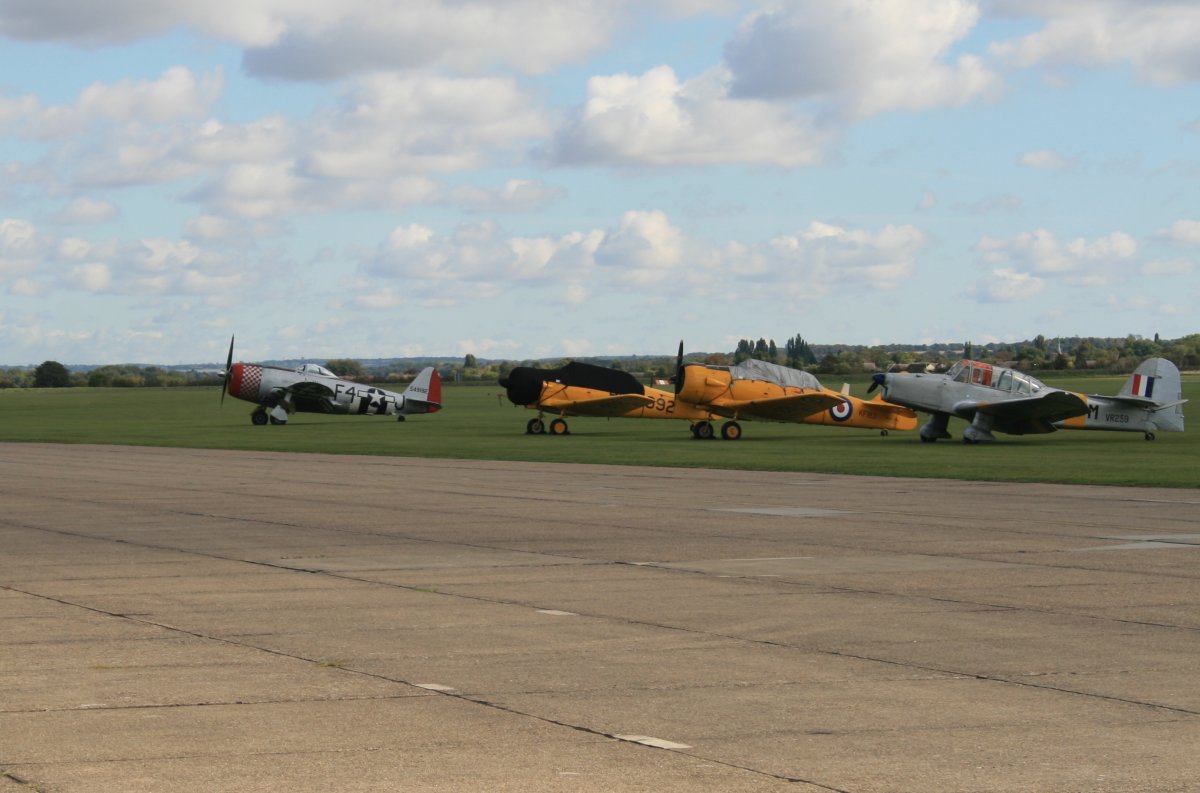 |
|
| XXX |
| Then an RV-7 pulled up right next to the P-47. All right! |
| |
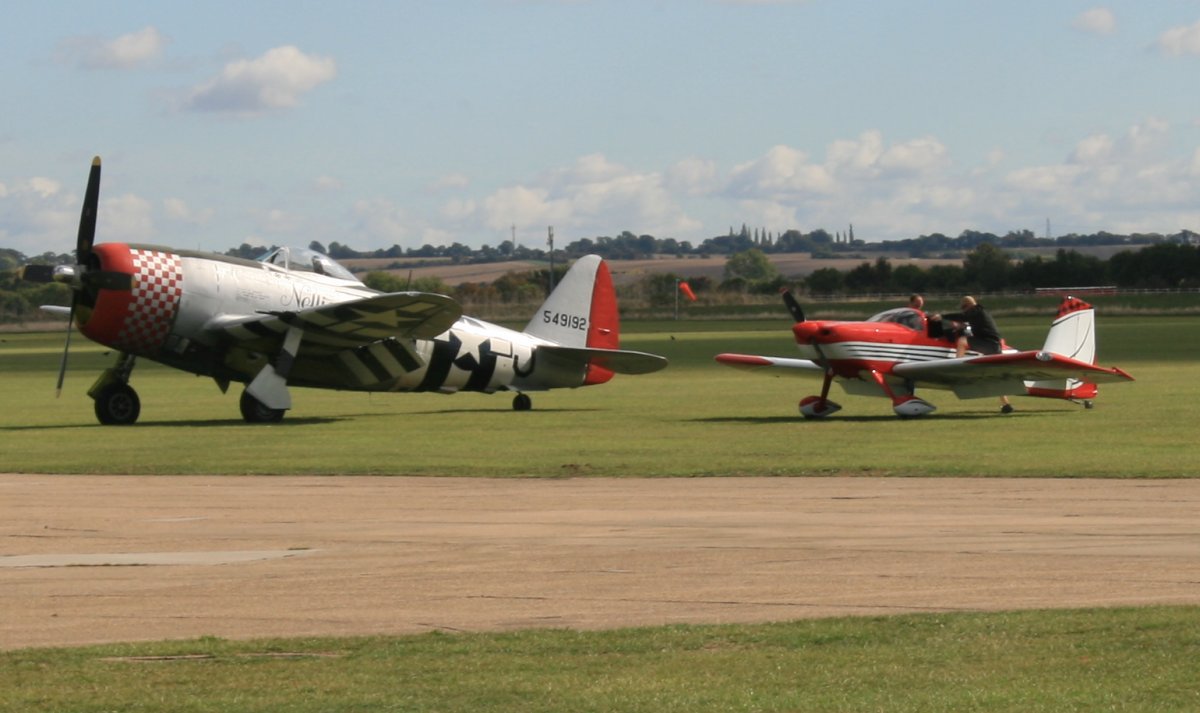 |
|
|
There were all sorts of Spitfires down by the big Hangar One. I tghink they had a sixteen-Spitfire formation fly-by over the weekend.
|
| |
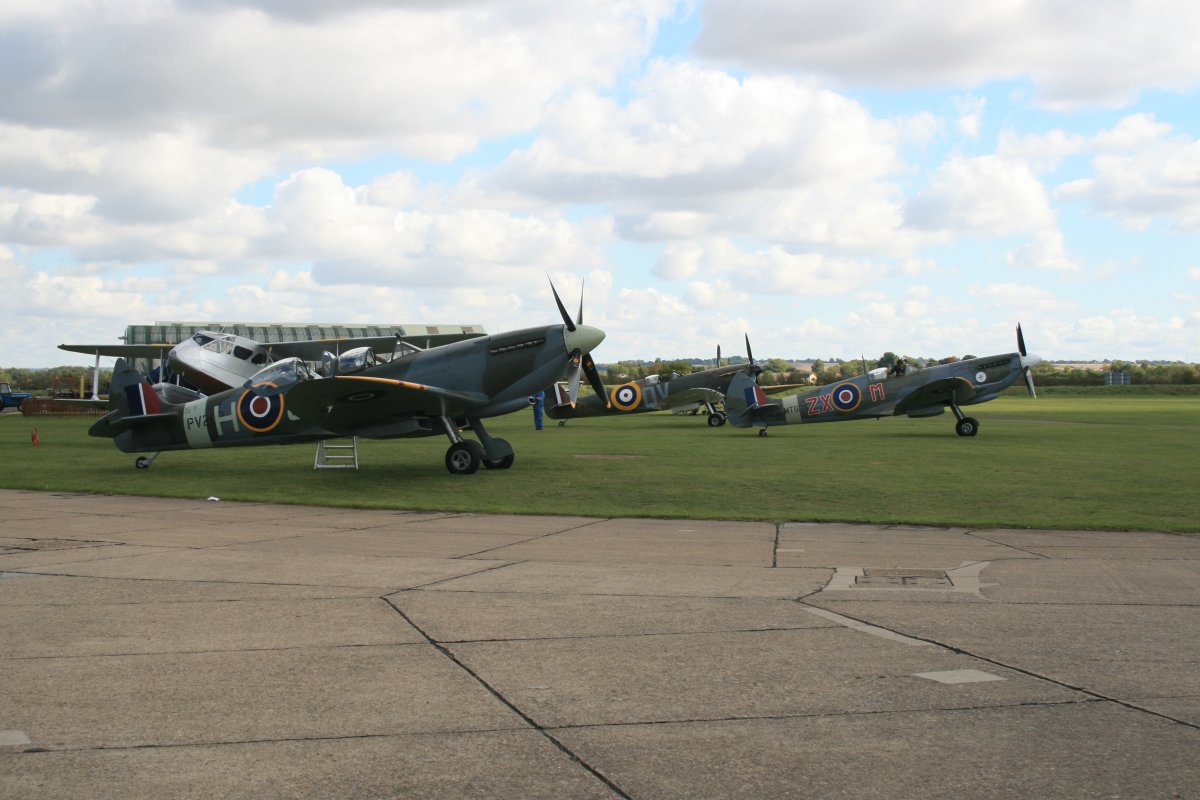 |
|
| XXX |
| I've always liked the de Havillande Dragon Rapide, a classy old British 1930s biplane airliner. |
| |
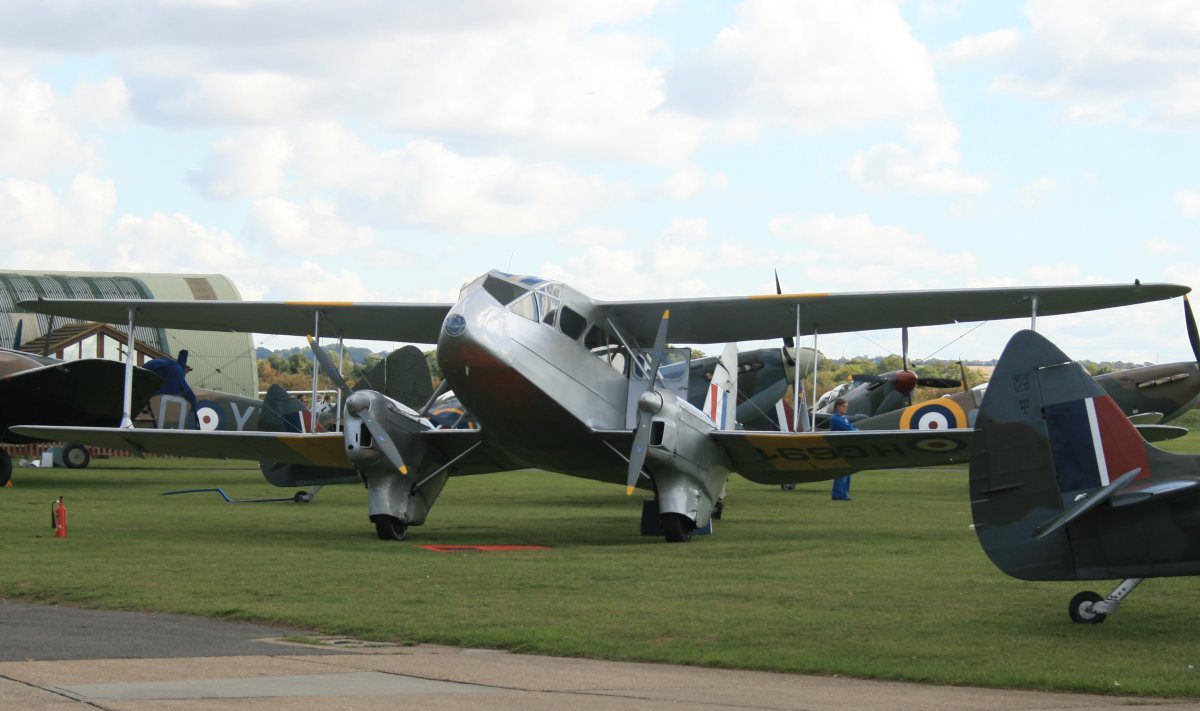 |
|
| XXX |
| More Hurricanes and Spitfires! |
| |
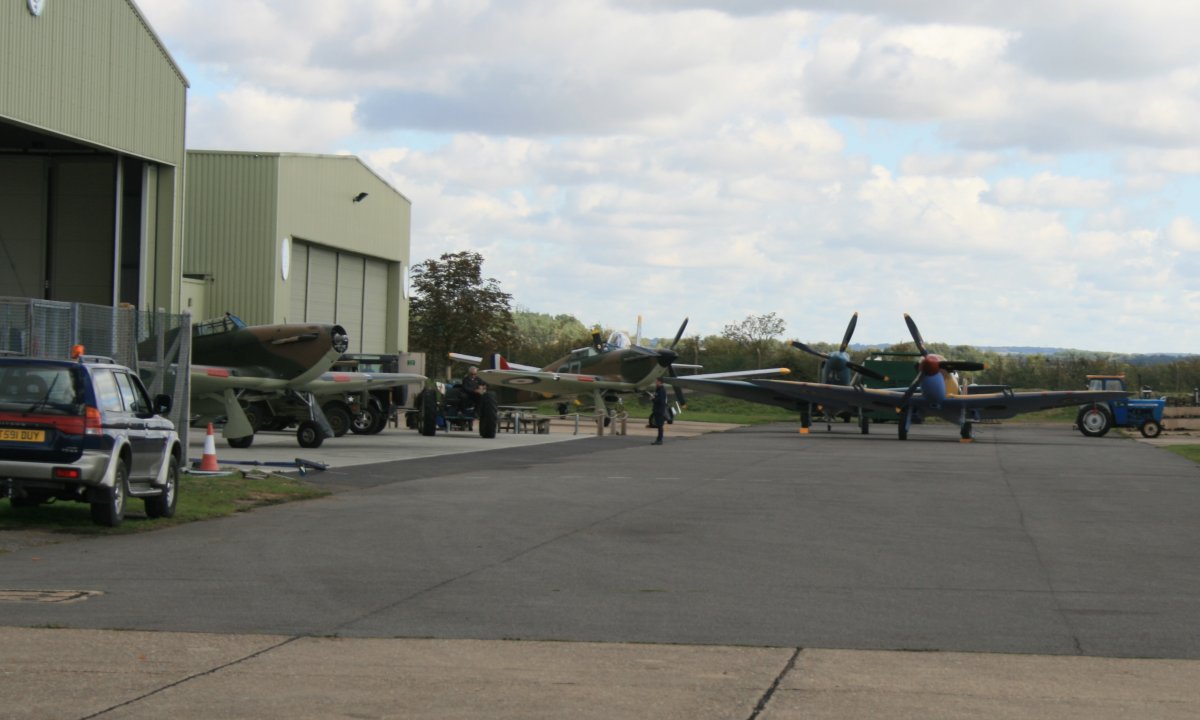 |
|
|
Next year! Be there, be square.
|
| |
 |
|
| |
| |
|
|
|
|
|
|



















































